
Five Smaller Runs with Big Rewards in the Sea to Sky
Looking for quick, scenic trail runs in the Sea to Sky? Explore five favourites near Whistler, Squamish and Pemberton featuring glacier lakes, alpine vistas and forest trails perfect for adventurous runners.
Surrounded by deeply beautiful and wild terrain.
Views that leave me speechless.
Feeling small and mighty all at once.
But returning home long before the sun sets and bedtime chores is much more my speed these days as a parent that lives in Whistler.
As a triathlete and fan of Type-2 fun, I like to choose hiking trails to run. In the Sea to Sky, we can get into remote areas with stunning views and dreamy lakes quickly if you know where to look. For the like-minded, adventure-curious, I’ve rounded up five great mini trail runs between Pemberton, Whistler and Squamish that I have on regular rotation. So pack out what you pack in, don’t pet wildlife and get ready to be transported.
First up, Jurassic Ridge
This trail is hidden in plain sight. If you’ve ever driven past Murrin Lake on the Sea to Sky Highway and wondered why anyone would recreate SO close to the highway, you’re not alone. I was dubious of this area until only recently. Murrin Provincial Park features very short loops of trails. But where the area lacks in kilometers of distance, it makes up in steep, exciting trail access. It’s a bit of hands-on-knees between jogging to get around the dramatic granite cliffs and up to one of many viewpoints. The reward, sweeping views of the baby blue Howe Sound. This trail is a cool hour-long hike for high energy kids or a quick 30-minute blast for adult runners. Bonus points if you can get there for sunset (it’s incredible!) but bring a headlamp as running in the dark is both spooky and hard.
Best for: Summit selfies with rock climbers, brilliant ocean views and surrounding inlet. Total adventure route.
Know Before You Go: As mentioned this area is a popular tourist destination. Go outside typical hiking hours and you’ll most likely have the trail to yourself.
What to Bring: If it is raining or has rained recently, the trail is made of natural root and rock stairs that tend to pool up and cascade with water. Bring Gore-Tex or a full change of clothes in the car for after.
All Trails Murrin Loop and Jurassic Ridge
Joffre Lakes
Yes, I know this place gets a lot of hype. But it’s for good reason. This is an undeniably special place. Joffre Lakes Park lies within the unceded territories of the Lil'wat and N’Quatqua Nations. You’ll find it about 30 minutes outside Pemberton. It can be subject to closures and in high season this trail is known for heavy foot traffic, but don’t write it off just yet! Early mornings or shoulder season is when I’ve often found Joffre Lakes to be quiet and a perfect place to run. This spectacular mission isn’t super far at just over 7.5k nor very long (my most recent run was just over an hour and fifteen minutes round trip) but it packs a delightful punch with 400 meters of climbing.
Best for: Deep blue alpine lakes, views of glaciers and ice fields, quick access to alpine terrain.
Know Before You Go: Check for closures that are weather-related, or to recognize the importance of the Pipi7íyekw/Joffre Lakes Park area to the Líl̓wat Nation and N’Quatqua. Day passes may also be required.
What to Bring: While this trail is popular it is still in remote wilderness. Have a plan for if someone in your crew has an injury on the trail and pack some emergency essentials in your running vest like extra food, an emergency blanket and warm layers. AdventureSmart (used by local Search and Rescue orgs) offers an awesome tool to help build a trip plan.
Whistler Mountain Snow Walls
Liz attempting to simultaneously run, wave and smile through the snow walls on Whistler Mountain
When the snow starts to melt in spring, Whistler Blackcomb carves out an access road from the Roundhouse Lodge on Whistler Mountain up to the Peak. The result is a gravel trail that winds through massive walls of snow. It’s like looking at a core sample of the powder days and groomer laps from the previous season. Very cool. This trail run is just over 7k with frequent steep (read: power-hiking style) sections so come prepared for a grind. This run usually takes me around an hour, but make time for photos with these beautiful walls, they’re fantastic. The route can get busy so aim to go first thing when the gondola opens for sightseeing.
Best for: High alpine views, warm weather snow angels and challenging elevation gain.
Know Before You Go: The snow walls are only accessible in a short window in spring/summer before they melt so plan ahead. Always check WB’s Lift and Terrain Status for closures. A summer lift pass is required to get to the start of this run.
What to Bring: Layers for the quickly changing temperatures in the alpine and sunglasses to ease the heavy squint from light reflecting off of the snow.
AllTrails Matthew’s and Pika’s Traverse on Whistler Mountain
Four Lakes Trail
I like this run because of the electric greens of the forest it travels through in Alice Lake Provincial Park. A gentler elevation profile than most of the runs on this list, the Four Lakes Trail climbs 130 metres over 5k. The beauty of this route is that it doesn’t require a sunny day to take full advantage. Vibrant moss and plant life come alive when it’s dripping with rain. When I’ve raced on this trail during the Squamish Off-Road Triathlon, it took me 30 minutes to loop it counter-clockwise.
Best for: Rainy days and true British Columbian rainforest vibes.
Know Before You Go: The trails can get muddy so pack a change of clothes or shoes in the car. Wildlife has been spotted in the area so check advisories before you go. You can sign up for wildlife advisories here.
What to Bring: This is not a high alpine trail so just bring your normal trail running kit here.
Cheakamus Lake
Gorgeous in any weather, Cheakamus Lake’s access trail is a must do for runners
Set in Garibaldi Provincial Park, the route to Cheakamus Lake is smoother than most trails on this list. A mellow 170+ meter climb over 9k will give this run a dreamy feel. It’s about 4.5k to the lake but runners can continue on until the trail intersects with Singing Creek. Make sure to book your day pass in advance as cell reception can be spotty at the trailhead.
Best for: Stunning in any weather, the sheer size of Cheakamus Lake and deep colours will stop runners in their tracks.
Know Before You Go: This trail is also quite popular so run here off-peak hours. You’ll need a day pass.
What to Bring: All the backcountry essentials you can fit in your running vest. Weather can change quickly and cell reception disappears a few minutes into the run.
It was tricky to distill this list down to five but I find myself coming back to them year after year. The novelty of snow walls, the sheer scale of the alpine and the deep beauty of lush rainforest never seems to wear off. I hope you get the chance to run these trails and if so, do it in a way that is safe and has minimal impact on your surrounding environment… AND Let me know!
I’ve missed your go-to short, but sweet, trail of yours leave it in the comments:
Does Physical Stress Hurt Work Performance?
Endurance Training Experiments In Rotorua, New Zealand
Is all stress created equal? It’s a thought that swirled around with me during the first stop of the World Tour in New Zealand several months ago. There’s a theory that one’s body and mind tap into the same stress management reservoir. In other words, work all day on a really cerebral and demanding project; and a person’s body will struggle to step out and put a huge workout down (performing at a baseline best). Vice versa for doing a huge session on the mountain bike and then trying to spend a rigorous day tapping keys on the ol’ laptop.
“Endure” has sparked an idea that I had to explore
Endure a book by Alex Hutchinson has kept me up a bit past my bedtime exploring this concept. Hutchinson refers to the legendary Tim Noakes and a study he did that found that people who were exposed to either a series of computer based challenges or a watched a dull documentary then both performed a ride to failure type of test on a spin bike had some confirming results.
Relieving some mental stress while following EWS Rotorua.
People that did the challenges prior to exercising noted that they experienced fatigue sooner and the perceived effort was harder than those that watched the boring movie. Both groups had the same heart rates and cycling durations. Rotorua, the land of working hard and playing hard was the perfect place for an experiment of my own.
The bright minds making Crankworx Rotorua happen.
During Crankworx Rotorua I put in big days and vast amounts of screentime. I’m periodically checking on projects from the moment I wake up until the final highlights and recaps go out sometimes as late as midnight. It’s exciting, cerebral and you guessed it: taxing on the brain - perfect for the first variable of this experiment.
Pausing to celebrate the festival on Slopestyle Day.
Now, for the body stress portion. A few weeks prior to stepping off the plane in Rotorua I had completed my first 50k Nordic Ski Race. I was fit and fresh from a week’s recovery. Ready to play outside. For my gear I had a wetsuit, mountain bike and trail runners at my disposal. Game on.
To test the theory I wanted to see which workouts would serve me best. What workouts could I do that danced on the line of achieving fitness goals and arriving sharp each day to work. I put a plan in place to test out shorter workouts before heading to big days at the venue, then doing the inverse: Two days of long workouts before working on some post-event projects.
Light Swim w/ Long Intervals
Hard Group Ride
Running with Short Bursts of Power
Running Slowly Without Structure
Light Swim with Long Intervals
10 x 75 meters at 85% of max pace - 50 meters rest between intervals
There are plenty of lakes to swim in around Rotorua. It’s dreamy. The one nearest to our little Airbn’b is Blue Lake aka Lake Rotuiti. There are two great buoy lines to sight off of. It might be a small detail but I feel more comfortable in the open water when I have smaller targets to swim towards rather than just aiming for the horizon. For this day of the festival, I took a solid 10-15 minutes at a relaxed pace to warm up and a 5-8 minute cool down. My body was feeling the fatigue. Shortening the duration from a typical hour but still working up to some harder efforts was the goal.
Verdict: Easing into the workout gave me the time and space I needed to switch gears and apply physical stress. The first long interval felt like I was dragging an anchor but after the recovery interval I felt sharp and ready to attack the day. This workout was a winner!
Hard Group Ride
2x 85% of Max Climbs, 1x Technical Descent Race Pace, 1x False Flat Time Trail, Cool Down
I set out for a sunrise ride with a few other strong riders on the team. We did a 400 Meter climb through slightly technical trail (“As You Do”, one of the best climbs in the area) at 85% of max then recovered for several minutes at the top. We rolled into a technical race pace decent on “K2” a gorgeous open descent with flow, tech and expansive views of the forest. From the valley floor we time trialed at max effort on a false flat through some non-tech flow trails like “Sweet and Sour” and “Dragon’s Tail”. For one final punch we did another 85% of max climb (up “Lion’s Tail” then a recovery decent to 80-90 cadence on the flats that lead home.
Verdict: This was a tough workout but pushing the pace energized me. To adhere to the high output I left most of my energy on the trail. Although this was a time efficient way to get a great workout in, my energy dipped around 3PM making my thoughts a bit cloudy and caffeine requirements shot up big time. This one might be best left for outside of festival time.
Ali taking a minute to enjoy the jungles of Rotorua
Running Slowly Without Structure
I’ve had my eye on running the Tarawera Trail since my first hike on it several years ago. It’s the perfect terrain for long distance running and the reward of finishing on a beach fed by natural hot springs isn’t too shabby either. Luckily, I have some amazing friends on the Tour that are always game for giving adventures a go. This run was a 15k point to point effort with no structure or intervals. We mostly ran at conversation pace over 2 hours and 20 minutes with an elevation gain of 740 meters. A water taxi picked us up at the end point so we didn’t have to save our legs for the return. Genius move, Totally Tarawera.
Verdict: While this was a highlight of my stay in Rotorua, the workout unsurprisingly doesn’t lend itself to productive afternoon thinking. Even-though the effort felt relaxed, I felt exhausted and in need of a snooze when I sat down at my keyboard later in the day. This one’s best left for days when not much mental brainpower is required post-workout.
Running with Short Bursts of Power:
Longer Trail Run session on the undulating green bike trails with 14 x 20 second sprint intervals with 45 second recovery.
My dear friend Ali and her pal from University joined me on a breathtaking run near Blue Lake. We set out on a rolling flat shoreline trail at a conversation pace and then opened up our strides once we hit the trails that skirted Green Lake. Pushing the pace at 20 second intervals we bounced through the red volcanic flow trails and returned along the other alternate side of Blue Lake. This is the second “long” session that I followed up with some project work back at my laptop.
Verdict: Although this wasn’t a long session in the traditional sense, the compound fatigue from previous days was noticeably accumulating. The continuous intervals of this workout left me feeling a bit more drained in the cool down phase but once I was showered, re-fueled (and re-caffinated) I felt calm, sharp and happily settled into an afternoon of work. This one’s a winner!
Although the outcomes of these “experiments” are purely qualitative and based on “feel”, it was a fun way to deliver a hot serving of some of my favourite workouts and the spectacular venues around Rotorua. If you’re curious and want to learn more about how stress affects our bodies mentally and physically these are a few cool articles:
Training Peaks Blog - Training Stress Vs Life Stress
NPR Health - Can Too Much Training Tax Athletes Brains?
Triathlete - Triathletes Suffer Better, Unless Their Stressed
What are your thoughts on stress? Leave me a comment!
Finding My Why On The Road
Looking back on some of the beauty and humour of training for an off-road triathlon and Ironman 703. while traveling with the Crankworx World Tour.
It was the eve of Whistler’s Ironman Canada event but I wasn’t dealing with pre-race butterflies or preparation stress. Rather, I was more concerned with if we’d brought enough food for an evening picnic. Lingering with a few friends after dinner the topic switched to triathlon. “Think of all those people that put their heart and soul into training and have a mechanical or can’t finish their race."
"What a waste," a friend said.
Another countered that it can’t be about the race day outcome. Think about all the experiences along the way. He was so right on so many levels. To celebrate the process, here are a few things I’ll cherish from my first season training for both an off-road triathlon and Ironman 70.3 while traveling with the Crankworx World Tour.
1. Watching The World Wake Up and Fall Asleep During Training
Most people that train in open water quickly discover the incredible privilege of pausing to watch the early morning pastels light up the sky while swimming. It still gets me in Whistler's Alta lake, every time.
But on the road, a few more things tickled me. First, on stop one of the World Tour aka Crankworx Rotorua, one of the broadcast days ran long and a big training run was in my plan. Armed with a super bright bike light and a few podcasts I explored the trails of the Whakarewarewa Forest at night.
The air was warm and Rotorua's lights flickered in a reflection of a few dimly light stars. But it was all thriller, no filler once I hit the trails. Wallabies, bunnies, birds and possum-like critters rustled and scurried.
I nearly jumped out of my skin three or four times.
Mid-run I found myself in area lined with tall sprinklers. 250 meters into the rows of sprinklers I read a sign that said something along the lines of "warning refuse sprinklers". Horrified at the thought of getting in the line of fire of poop spray I lunged into a sprint and set a PR back the way I came. But I survived, with a few funny stories and ticked the workout complete at the end of the night.
The Innsbruck city streets leading to nearby mountain bike trails
On Stop two of the World Tour in Innsbruck, Austria I set out for a mountain bike ride at first light to make sure I was back in time for our team meeting. Rolling through the city streets, I encountered throngs of club-goers leaving bars. Couples kissing, bottles breaking and general debauchery was the vibe. It was hilarious. After checking out a good portion of the famed Arzler Alm Trail I retraced my route back to the hotel. Only about an hour's difference and joggers, commuters, and street sweepers replaced the partiers. Zero evidence of the previous night's party. It was as if they were never there. A hysterical and bizarre changing of the guard.
Views of Innsbruck from the trails
2. Becoming a Terrain Reading Ninja
Ok, I have to admit this one is still a work in progress. But while on tour, there's always a time crunch on triathlon training. There isn't much room for navigational errors out on the mountain bike or running trails. My dilemma, I love seeing new places and working out over a full loop or out and back track. At each stop, I spliced together the Strava segment explorer, Sunnto Heat Maps and TrailForks to do my best to make training more fun. To tick all the boxes and bag all the views.
Days before kicking off Crankworx Innsbruck we had a chance to trail run to this spectacular view in Leogang, Austria.
On the third stop of the World Tour in Les Gets, France I found a mint trail in the bike park to do hill climb intervals. Taking into account elevation gain, type of terrain and length of trail I worked out that I could make it to the top as I clocked in my final set.
Enjoying the views from the top of Les Gets Bike Park
The views from the summit are stunning. As a treat, I picked what looked like a gentle blue trail to motor my short travel cross-country mountain bike down. I quickly realized that this mellow intermediate flow trail featured a number of gap jumps and proceeded to comically smash into the upside of one of the landings. Stans from my tubeless tire sprayed like a cinco de mayo sparkler all over me and the trail. My arm and ego sustained a bit of a bruise, but I was injury free. I often wonder if half of the adventures I set out on would have been achieved if I didn't have a goal race and training in the works.
3. Anxiety or Stress?
Elevated heart rate, hard work and discomfort. They're both characteristics of Anxiety and Stress. I've confused them so many times. What started out as a huge roadblock in my training became an innate connection with my body. I think back to the times I overheated on my trainer in the winter and gave up on my workout or felt like my heart was going to beat out of my chest on an interval outside. There was something instinctual telling me to back off or else I might self destruct.
Winter training on my snow covered balcony.
When I unpacked the concept I realized I wasn't going to self combust. If I needed rest, it was going to have to come from more sleep, better fuelling and recovery. Not from quitting when things got tough. When I eased off and pushed through challenging workouts I felt indescribably stronger than ever before. There wasn't a moment but rather a collection of times in Rotorua, Innsbruck, Whistler and Les Gets that I recognized the anxiety and converted it into good stress.
The result of harnessing good stress on a Blackcomb Mountain Trail Run with Liz
4. Endorphins as Treats
Lastly, the time spent playing outside of structured training is now a sacred reward. Bike Park laps in Innsbruck, Yoga in Rotorua and hiking in Les Gets filled up my cup of stoke. Each activity, served as beautiful rechargers for my body and mind. These unstructured adventures kept me sharp and beaming with gratitude.
I can't wait to build on these moments, feelings and learnings for 2019. What wonderful and wild way to see the world. Are you training while traveling? Leave a favourite story in the comments.
Te Iringa Track Bike Packing
Bike Packing in New Zealand on the Te Iringa Track.
In March, I wrapped up my first festival on the Crankworx World Tour. Nothing short of blood, stoke and tears went into marketing our first stop: Crankworx Rotorua. The event took place on the North Island of New Zealand. In a little slice of mountain bike heaven. The air oscillates between the honey-soaked smell of tropical flowers and pungent, volcanic sulfur. Rotorua is an absolute trip.
As expected there were long days that blurred into longer nights. Fleeting moments of freedom for training bookended with notifications, phone calls, text messages and emails - all marked "urgent".
The Crankworx Rotorua Crew of 2018 - Photo by: Clint Trahan
I can’t claim ignorance or cry out for sympathy. Everyone warned me about the magnified pressure of event time and I'm sure that zero friends want to hear about the tough time I had in tropical New Zealand during a cold Whistler winter.
So here's a brief synopsis. The energy put in converted to exponential wins, the event rocked and our team is a blast to work with.
This trip report for my Outdoor Stories blog actually unfolds two hours south on the Te Iringa trail near Lake Taupo.
Lake Taupo was the staging point for our transition into wilderness adventure mode.
Dan and I, still hyped up on the adrenaline from event mode, found balance in counterbalance. A challenging bike packing trip two days after Crankworx Rotorua wrapped up in the wilderness of Kaimanawa Forest Park.
The Ingredients.
Our Bikes
Fresh off the ridiculously good riding in the Whakarewarewa Forest, we had our Yeti SB6 and SB5 in tow. Talented climbers for our bike packing adventures and absolute weapons for the descents.
A quick glamour shot before hittin' the Te Iringa Track
Packs
My 60L backpacking bag was heavy and awkward. I’ve taken it on a few bike packing trips now (check out St. James Cycle Trail or Kirwans Hut) and I’m ready to retire it but it did the job.
Dan brought a 32L bag from Osprey and raves about the size and weight distribution, it's called the Escapist. In an ideal world we’d get the weight off our back and onto the frame of our bikes but the type of trails and bikes we ride makes that option a bit challenging. Traveling with previously tested gear and not spending the extra cash for the win!
essentials
Sleeping bags
Pump / repair kit
Spare tubes
Phone (for photos, no signal out here)
Snacks: homemade gels, nuts/seeds, fruit, nut butter packets.
Dinner, Lunch & Breakfast: instant quinoa, hard cheese, flavored tuna packets, broccoli salad, avocado, tea bags.
Kindle (totally unnecessary)
Rain jackets
Pants, spare socks and shirt for hanging in the hut
Collapsible, silicone kettle, cups and sporks (kick-ass wedding gift)
Lighter
Headlamps
Stove and gas
First-aid kit
Bug spray, sunscreen, face wipes, toothbrush/paste
Stuff-sacks for food, garbage and clothes
The Journey.
We found a bit of information online about the trail on a Pinkbike post from 2015, some TrailForks logs from 2017 and a couple of local websites like NZByBike and RideNZ.co. But there wasn’t anything recently posted online. We considered the trip an exercise in blind faith and an excuse for pure adventure as the Rotorua locals we questioned didn’t know much about the trail either.
We quickly confirmed from what we did know that the Te Iringa Track is a hike-a-bike right out of the gate.
Up, up and away.
We pushed for about an hour and a half to a grassy clearing in the forest that made for a perfect lunch spot. The clearing was a former hut site and served as an awesome trail marker. It would be the start of the decent when we returned the following day. But for today we still had a bit more climbing to do. This time it was from our saddles.
Perfect lunch spot and a break from the climb.
As we traveled the ridge line and down into the river valley, the Te Iringa wove across rivers,
around moss,
across a sketchy swing bridge,
through bogs,
and over a tough mudder-worthy load of deadfall.
Nearly six hours and 20.3km from the car park we arrived in a meadow of tall grass. The gurgle of nearby Tikitiki river grew to into rapids as we rode quietly in and out of trees. We were exhausted. I wanted to pull over for food or to drum up energy from somewhere but we rode on hope, hope that we could rest our weary bodies soon. According to the elevation profile on our map, it was just around the corner (a bajillion corners ago).
But then, like a desert oasis, the Oamaru Hut appeared in the distance. Warm and welcoming, a beacon of relief: no more riding for the day. We had arrived.
Excited but mostly dog-tired. I have a terrible poker face.
Our Oamaru Hut Home.
What do you do when you arrive at an incredibly well maintained shelter and discover that you have it to yourselves? Cook a feast and sprawl out like kings. The 12 bunk, three room hut boasted a fireplace and huge windows. A real stunner of a retreat. As the sun slipped behind the mountains of beech forest and old growth, we curled up in our sleeping bags listening to the crickets and sipping tea by a roaring fire. I brought my kindle to unwind but never turned it on. Between a mild stress headache (aftershocks of event time I suppose) and blissful exhaustion, I dozed off before the moon could make a full appearance.
Good Morning.
We rose with the sun, as one does when sleeping in the wild in direct sunlight. But the birds and bugs were already humming, stinging and chirping. We were in good company. I have a theory that the return day of bike packing trips always feel like a victory lap. A reward for the previous day’s hard work. Unfortunately, the Te Iringa Track is the exception that broke my (rather unscientific) theory. Our ride (and hike-a-bike) climbed 671 meters in elevation. That’s actually 100+ meters more than the previous day and took us a little over an hour extra to return. Foiled.
The Te Iringa Obstacle challenge in full affect.
So, Why?
The final descent, that’s why! Just like Crankworx Rotorua, the fruits of our hard work paid off in spades. Spades in the form of a huge, gravity-fed rush down from the ridge line of Mt Te Iringa. The return was so much black diamond, techie fun that our cheeks hurt from smiling. Tight turns, small drops and rooty rock sections.
That's the face of a very stoked mountain biker.
Heavy backpack be damned, I let that bike flow, no brakes. We knew that once we reached the lunch spot from our previous day’s journey that it was on. We railed down 340+ metres of sustained downhill for over 20 minutes. All the hours of climbing, slogging heavy packs and carrying our bikes worth it.
Getting lost in the sweet mix of loam and roots.
Ready to Ride It?
Explore our route to the Oamaru Hut and the return back on Strava. Then you can flip through my Instagram post to watch the video journey out and back too.
Good Idea.
At this point I'm hooked. I can't wait for our next overnight bike packing trip. Taking on a physical challenge that matched the mental endurance spent on the festival a week prior had it's highs and lows.
The upside is the that sights and sounds of the forest made for a tranquil place to unpack the week’s events. I found the challenging terrain on the Te Iringa helped me clear my mind and sweat out the absurd amount of caffeine and peanut butter from the week prior (yeah, I said peanut butter).
Forest Bathing.
However, when we peeled ourselves from our bikes at the end of our journey we needed a solid couple of days of chill. My advice, build a buffer into all bike packing trips, especially the Te Iringa, given with the huge amount of pushing, pedalling and carrying we did. Until next time!
What Fuels Motivation?
Tales From a Weekend of Trail Racing & our Whistler Off-Road Ironman.
It's that time of the season where some of us peak for races, a few unlucky athletes supernova into injury and many head straight for pre-winter hibernation. In this quieter period of training I find that it's a cool time to re-discover purpose and look at the bigger picture: Why do I race? Why do I train? Beyond physical benefits, what do I gain mentally?
As luck would have it this year, in a delightful crescendo, a weekend of racing helped me connect the dots and answer these bigger questions in early September. The weekend's itinerary was a 10K high-alpine trail race (North Face Valley to Peak) on Sept 2nd followed by the equivalent of an Off-Road Ironman on Sept 4th.
A mixture of training and the weekend's events helped me discover that my reasons for doing what I do stem from my four key elements of:
- Mental health
- Community & Belonging
- New Experiences
- Pushing limits
Each resonates with me deeply.
From the starting line of this year's Valley to Peak straight through to the finish line high-fives of Our Tri Specific Off-Road Ironman, I had plenty of time to think about this one.
Mental Health
I train to be strong. I want to be strong to be competitive. I want to be competitive to achieve my personal best. At my core, health and fitness contributes to feeling accomplished and ultimate day to day sanity. The start of the weekend was a perfect example of flexing my mental health muscle. I signed up last minute for the 10k Valley to Peak race. The run certainly hurt more than anticipated. Many sections required straight up power hiking and scrambling. Not your average running race! But there were several occasions when glacial vistas popped into sight. My mind would instantly clear and a rush of endorphins would burst through my system. Absolutely beautiful.
The trail run course was almost entirely singletrack so I knew that I would have to sprint out of the gate to land myself in a position on the trail that was slightly faster than my race pace. That way, I don't have to worry about passing people if I'm feeling strong. Once the course cleared Harmony Lake we began to take on the punchy climbs that trail running on Whistler Mountain is notoriously known for. I felt some panic on a few of the climbs but realized that I just needed to drop down to a shuffle or power walk.
Pro Tip: A few of my ultra-runner friends suggest putting my hands on my thighs and leaning into the mountain as I power up steep terrain - totally works.
Although I was passed a few times, I felt accomplished at the finish line. I left everything on the course. Mentally, this was a great tune-up for the upcoming huge effort. I even managed a pretty solid victory.
Being in the alpine, taking advantage of Whistler's trails, balances me. I notice a dip in my mood when I'm not able to train leading up to races. According to a recent Outside Magazine Article about the positive effects of exercise on brain health, being active can heighten senses and enhance your ability to perform cognitive tasks. Interestingly, exercise can actually re-structure your brain. There's quite a bit of cool research behind it from university professors Richard Maddock and Tom Bullock.
Community & Belonging
After some quality rest and relaxation in the sunshine. My body post-Valley to Peak race was starting to feel ready for the main event: Kristian Manietta's Off-Road Ironman.
With a day's rest we were back at it, racing a new beast of an adventure just before sunrise. One of my closest friends and training buddies, Liz agreed to take on this big challenge with me. We agreed that neither of us felt comfortable "competing" but that we'd love to act like a team, staying within sight of each other all day. Some athletes (I'm certainly guilty of this from time to time) get caught up in the excitement, drop the plan to "stick-together" and go for it.
But when I rounded the second buoy of that 4K swim, there was Liz, treading water waiting for me! It was a pretty cool moment. From then on we managed to swim within a few feet of each other, pausing together when we needed a break for the rest of the swim. I love this girl!
Here's a great little article about the power of community:
New Experiences
This is my official ode to YOLO. I'm all about collecting experiences, who isn't? Riding Lord of The Squirrels had been on my list for ages so it was incredible to see if for the first time in perfect weather. Liz and I even managed a dip in one of the alpine lakes. An excellent mid-challenge reset. Big lesson learned here, I neglected to bring my gloves and miss-timed my nutrition a bit. Had this been an actual race, there would have been some disappointment but luckily Liz and I kept each other accountable for fueling and rest. Solid plan for pacing.
PUSHING LIMITS
We hit transition from mountain bike to trail run expecting a solid heckle from the already finished, seasoned Ironmen/women. To our surprise we had cheers and applause. But no amount of warm welcomes could initially spur us into the run leg. I sat down with a snack and contemplated calling it a day. My body ached, my hands were raw and my mind was dull from the acute focus I had given to our Lord of the Squirrels descent. After we refueled, digested encouragement and changed into trail run gear we decided to push on. I found a brilliant, short essay on InnerVoice.Life that put limit pushing into perspective:
Kristian stuffed our trail running vests with snacks, water and a headlamp and sent us on our way. Liz and I zombie walked out of transition. But our legs were moving - so our bodies followed.
This is the defining moment, each step was a step further than I thought I could do. It wasn't pretty but we fed off of each others strength.
Now we were jogging.
When the sun began to drop below the edges of the valley, we knew we were running out of time and had to cut the trail run short. Mid-way up Blackcomb's Ascent Trail we shared a hug and an exhausted high-five - we were coming home! "It was as if our bodies were moving independently of our brains. I felt completely detached from myself.
After 53 minutes we made it to our glorious finish line at the HandleBar. We collapsed into food and drinks - the sensation of acomplishment was intoxicating. Awaiting us were these super rad trophies:
Even though we didn't complete the first annual Whistler Off-Road Ironman course I felt a surge of pride, a desire to tackle it again and quite frankly, straight up JOY. This weekend couldn't have been a better distillation of my athletic values. This is why I put myself through the paces. Through training sessions, early starts, stiffness and big race days. The best part, our community, coach, fellow competitors and partners are true catalysts in bringing us together. Each season it's worth celebrating all of these reasons to train and compete.
Why do you race?
Leave your thoughts in the comments.
Squamish Off-Road Triathlon Race Report
In July 2017, I raced the Squamish Triathlon's first off-road event. Here is my race report and some on course thoughts.
In May, Canada welcomed us with open arms after our wild 6 month adventure across New Zealand, Australia and South East Asia. Shortly after touchdown we experienced a whole new chaos: Getting ready for our wedding and reintegrating into Whistler life. To add a little structure into my day-to-day, I decided to pick up an entry for a new off-road triathlon in Squamish, BC. I felt a bit rusty getting back into the swing of swim-bike-run training, especially with so little time until race day. But hey, I love a good challenge. Here's a little recap of the race:
Swim
Athletes don't choose Alice Lake for the water clarity. But, despite the water having quite the muddy hue, it's typically the warmest lake in the area. As for me, I had an awesome swim. The course presented some interesting challenges, however. For example, some of the buoys were difficult to sight against and the docks near the start/finish bottle necked the swim a bit.
But gripes aside, no real complaints from this girl. Why? This was a breakthrough swim for me! I managed to stay with the pack, steering straight for most of the lap. As an admittedly average swimmer (I'm working on it - Thanks Kristian!) this was an absolutely stellar feeling. To track my distance and visualize the data after the race I regularly swim (bike and run) with a Suunto Ambit GPS watch. It's a pretty sweet tool that I've come to rely on heavily to track progress. I have it set to sync to other platforms including Strava and Training Peaks right after my sessions. Below was my effort synced over to Strava:
A quick transition onto the mountain bike course and I immediately noticed the power difference between a sprint and championship distance. This round, the sprint had my lungs at a consistent burn. Plus, my heartbeat reverberated into my throat at every gradient increase. Type 2 fun at it's finest. I didn't change the set-up of my Yeti SB5 other than locking out the rear shock and adding a faster rolling tire on the back. Friends at Arbutus Routes helped me out with a race tune and the bike performed exceptionally well. If you're curious about how my bike's set up, check out the post I recently did on the Tales From The Trails Blog. For hydration I wore my little EVOC Stage 3L. I stuck to plain water and kept an emergency gel for the back end of the course. I found I didn't need much fuel - total bonus of the short course! Below is my bike effort on Strava:
A woman a few seconds in front of me through the swim to bike transition was sporting a number on her calf that indicated she was in my age group. I locked in on her and chased heavily in pursuit. We started on a wide-open fire road climb shifted into a mostly flat flow trail that gradually dropped off into another flat(ish) rooty and technical section. We then climbed on vibrant singletrack back towards transition. Such a lush forest! Just as I had accepted that she would be too tough the catch, the elusive leader pulled off onto the championship course loop. A photographer shouted at me "first female". I was already riding on a wave of stoke about my mid-pack swim but this was just unreal.
Screaming out of transition I turned up onto the "Loop The Lakes" trail and into the green room. I may have been moving too fast to truly appreciate the gorgeous surroundings on the bike leg but on the run it hit me, that tunnel of tropical green plants was incredible. This area has to be one of my favourite stretches of trail on the planet.
While I may have been leading off the bike, a new podium contender blew past me as if I was standing still on the trail run. We were just about to hit the biggest climb of the course. I pushed hard to chase her but she slipped away. Trying to close the gap I opened up my stride at the top and resumed chase mode. After corkscrewing around the undulating downhill of the course I ultimately discovered I wasn't strong enough to catch her. But I held strong, beating out the surprise appearance of the third place finisher. Number three had silently caught up and crossed the line only an arm's length or two behind me. Such a thrill. For the gear on this section I kept my hydration pack on and switched into my new trail running shoes: the Speedcross 4 - they're ideal for my foot profile and mega grippy. I carried over the emergency gel and cracked into it about 2k into the trail run. I tried not to leave anything on the course but it's tough to operate in a constant state of red line. When I finished the run portion I couldn't help but feel like I wanted to keep going. Probably my best indication that my optimal distance is longer. Below is my run effort on Strava:
The sprint distance finishes so much earlier than the championship. I actually had time to spectate. There were so many people out there racing their own race, going after individual achievements. It actually gave me the feeling of a communal bond with our local endurance athlete community. The inspiration and emotion is contageous.
Before any results were posted I couldn't help but feel an overwhelming sense of accomplishment. I couldn't dedicate as much time to training as I have in the past, so many of my efforts were gentle mileage. A mindful style of balanced training. There's something beautiful about going slow to race your heart out in a competitive setting.
Results:
Motatapu Race Report
I signed up for the XTERRA Motatapu as a goal race to train for in my first “Double Summer”, back to back summer seasons. What seemed impossible, soon became a beautiful part of the journey.
Months ago, when I first arrived in New Zealand, I signed up for the XTERRA Motatapu as a goal race to train for in my first “Double Summer” (back to back summer seasons). I Imagined quiet hours of intervals in Christchurch, hammering out the work needed to get me to the start line. But when our plans to stay in Christchurch changed, I was faced with the challenge of training while traveling around New Zealand. What seemed impossible, soon became a beautiful part of the journey.
Swim (2k):
I swam in beautiful lakes, oceans and dozens of pools, it’s a very cool way to train. Check out my other post about making the most of swim training on the road here.
Race Day: The swim is my biggest struggle. The gun went off, we stampeded into the water and I hammered through my first hundred meters. Panic set in strong. I either wasn’t as prepared as I thought I was or these racers were really fast. Either way, that was a slow, zig-zagged effort.
Mountain Bike (47k):
Of all disciplines I felt really strong on the bike. We bagged huge days in the last few months. From bike packing the Saint James Trail to the point to point Wakamarina, to Rotorua heaven, my legs felt strong. My only note for the coming season, I need to put more structure into training on the bike. Yep, Intervals…
Race Day: The Motatapu trail itself is closed to the public outside of the race, so I rode the 47k blind. Watching others do a fair bit of blind racing lately, (Kate, Shane, Shaun and Marissa - You have my utmost respect) this was by far the most fun part of the race. The terrain was fairly consistent, gorgeous and fast rolling. A serious highlight was the challenge of the river crossings. We did dozens of them. Some up to 50 meters long, some fork stanchions deep. Because my swim was so mediocre, I left everything out on the trail trying to gain back time on the bike. I passed so many people that I rode the last few kilometres on sheer adrenaline.
Trail Run (15k):
Training for the trail run, just as with the other disciplines, was difficult. In traditional training most sessions are some form of interval work but travel requires creativity. I turned most hikes into runs with scenic exploring missions.
Race Day: Shortly after I made the switch over to my trail runners, I rounded the corner out of transition, hit Tobin’s Track climb and suddenly felt awful. Legs were dead, totally out of gas. A few women passed me. There goes podium and here comes the dark moments of my race. Should I go on? Could I go on? I started to walk. I weighed my options as I slogged up the steep track. Pulling up the feeling of my first DNF, from a bike race last year, I decided to keep going - even if I had to walk the whole thing. I hated the idea of not finishing a race. From walk, to slow jog to decent pace, I tackled the full 15k. The views were just as stunning as the bike and the trail was significantly more challenging. On more than one occasion I used rope or railing to traverse the trail, scaled ladder-like climbs and of course sloshed through a second lap of deep river crossings.
Finish:
Sunburnt, soaked from river crossings and totally exhausted, I ran the last 1/2 kilometre with my dear friend Shaun (Frysie), nearly in tears of joy to be so close to finishing. He peeled out then Marissa and my partner Dan met me with open arms on the other side of the finish arches. What a stupendous support crew. The Motatapu was an incredible experience and has me hungry to try more like it in the future!
Nydia Track - Trails & Takeaways Report Series
I'm documenting my own adventures, focused on some of the best New Zealand rides and runs I've done. The Nydia Track is one of both and the next in my series of bite-sized trail reports.
Traveling through New Zealand, I'm constantly searching for trail running and mountain biking information. To help endurance sport loving travellers of the future, I'm documenting my own adventures, focused on some of the best New Zealand rides and runs I've done. The Nydia Track is one of both, the next in my series of bite-sized trail reports.
NYDIA TRACK
Location:
Between Blenheim and Nelson in the Marlborough Sounds on the South Island of New Zealand.
Details:
This is another point to point mission. Most websites suggest traveling the 27k in a two day trip but we opted to do it in a long day. We decided to get creative with our shuttling by sending half the group to the Duncan's Bay trail head to mountain bike and the other half to Kaiuma Bay to trail run. Coincidentally, we met up for high-fives and lunch almost exactly at the half way point of the trail.
Report from the bikers was that the trail was pretty darn challenging with several greasy, technical fun bits. They also mentioned that riders should be prepared for a few hike a bike sections (on both the descents and the climbs).
I was in the group that did Nydia as a trail run and I loved every moment. The trail has three primary climbs but rarely were any of the gradients too steep to jog. The portion of the trail that wraps around Nydia Bay itself is flat with some great stops for photos, especially with the legendary pet eel affectionately named Eddie, that you'll meet in a nearby river.
Takeaway:
Bring plenty of water. The only place to refill is at the Nydia campsite and there's no guarantee that the water is safe to drink there.
The Data:
- TrailForks report can be found here
- Some history, maps and further logistics instructions can be found on the Department of conservation site.
- GPS data uploaded from my Suunto Ambit3 Peak n a cool little video here:
The Verdict:
As I mentioned on my Strava entry, the Nydia Track is the longest trail run I have done to date. A special thanks to my girly running tribe for the day, Lisa and Ali. With snack breaks and photo stops it was a really achievable journey. Do it by bike or running shoes!
If you have any suggestions for epic trail runs or mountain bike rides in New Zealand, leave your thoughts in the comments!
Wakamarina Track - Trails and Takeaways Report Series
The Wakamarina Track is the first in a series of of bite-sized reports about the best New Zealand rides and runs.
Traveling through the North and South Island of New Zealand, I'm constantly on the hunt for running and mountain biking trail data. In response, I'm creating my own, focused on some of the best New Zealand rides and runs I've done. The Wakamarina Track is the first of a series of bite-sized reports.
Wakamarina Trail
Near the finish of the main Wakamarina decent, we stopped for a break at the Devil's Creek Hut
Location:
Havelock, between Blenheim and Nelson on the South Island of New Zealand.
Details:
This sweet ribbon of trail is mostly singletrack with a mixture of loam, roots, clay and hike-a-bike. It's a point to point ride that's best done from south to north and can easily be done as a single day adventure. It's a long and hot ride so pack plenty of water and food. We opted out of the paid shuttle because we had two vans but we soon found out that the gate at the base of the start can be locked at anytime, without notice. Bonus climbing anyone? All complaints aside, the decent from the highest point is out of this world. The trail was originally a gold mining track that has a brilliant change in consistency as you decend into the Wakamarina Valley. From rooty and dry conditions down through loam, lush ferns and waterfalls.
JJ of A-Line Coaching, guiding us through some of the finer points of flat corners amongst the ferns.
Takeaway:
Always pack an antihistamine in your first aid kit - Dan was stung by a wasp... In The FACE.
The Data:
TrailForks report can be found here
GPS data uploaded from my Suunto Ambit3 Peak n a cool little video here:
The Verdict:
Go ride this trail. It's a rad day in the saddle.
Kirwans Hut - Welcome to the Jungle
On a high from the rugged beauty and raw challenge from bike packing the St. James Trail, we set out for Kirwans Hut just outside of Reefton, NZ.
On a high from the rugged beauty and raw challenge from bike packing the St. James Trail, we searched for another hut to explore on our journey to the North Island. We landed on the Kirwans Hut just outside of Reefton. The recent rain in the region made the climb a tough and boggy march. It was well worth it for the next day’s decent: Over two hours of loam surfing through mud and jungle.
Trail Type:
Singletrack with some unridable sections in either direction
Trip Plan:
We left mid-day and arrived just in time for dinner. Kirwans Hut was easily the nicest hut I’ve ever encountered. We're talking a mudroom, kitchen and double pain windows. In the morning, we had a leisurely breakfast waiting for the clouds in the valley to break, then returned via the same trail.
Elevation Gained:
1380 meters
Kilometers Traveled:
About 28
Weather:
Out: Humidity was high but we didn’t experience any rain.
Return: was hot and sunny.
Company:
It was great, as always. We only had to share the hut with two other people.
Bike:
Yeti Sb5c and Giant Reign
St. James Cycle Trail Trip Report
Check out the trip report from our first bike packing over night trip in New Zealand.
TRAIL TYPE
A mixture of fire road, double track and singletrack
TRIP OVERVIEW
Judging by the trail description the trip could be done in one day, but where’s the fun in that? We split the adventure into two days by cutting out the shuttle option and leaving mid-day. This also gave us an excuse to test out our bike packing gear and stay overnight in a remote hut. We made it to the Guyon Hut in just over 5 hours and narrowly caught sunset. It was unreal.
On day two we set out in the morning for some serious saddle time: 7 hours and 53 minutes of mountain passes, stream crossings and wild terrain. Our packs were heavy, but the journey was pure magic. The corners of my mouth hurt from smiling so much.
ELEVATION GAINED
2030 meters
Distance Traveled
92+ kilometers
Weather and conditions
Mix of sun and cloud. We marched through a headwind on day one but any hints of a storm circled around and passed us.
Getting settled at the Guyon Hut after our first day on the St. James Trail
Company
Was great, as always. We only encountered one or two other groups over the entire 12+ hours of trail time.
Dan admiring the view.
Bike
Yeti Sb5c and a Giant Reign
Wildflower hitching a ride on Dan's bike
Key pieces of gear
- Any weight we could move from our backs to our bikes made life easier. I used a bar bag, back packing pack and kept my repair kit under my saddle.
- My Suunto GPS watch kept us on track and helped manage our food and rest stops.
Bridge crossing selfie
Don't Underestimate...
How serious the sand fly issue is: Bring bug spray!
Dan climbing up out of the valley
Check out Dan's PinkBike Photo Essay:
Swim, Bike, Run: Christchurch
I'm planning to keep up my off-road triathlon training to race the XTERRA Motatapu in Queenstown, March 4th. To kick things off, here are my favourite training spots in Christchurch.
While Dan and I adventure across New Zealand, I'm planning to keep up my endurance training to race the XTERRA Motatapu off-road triathlon in Queenstown, March 4th. To date, it’s been a cool challenge so I thought I’d share some training gems from each major stop-over. To kick things off, here are my favourite off-road triathlon training spots in Christchurch:
Swim
Although there are some zesty open water options, a treat for day-to-day swim training is to head to one of the outdoor pools. I’m a huge fan of Waltham. It’s the official home to the Canterbury Triathlon Club and a lovely place to get some sunshine while knocking out swim workouts. Mid-day, Waltham is a relatively quiet pool with the added bonus of extra long lanes: 33.3 meters.
Walham Pool (The lanes are behind the mob of children)
A great resource for swim training in Christchurch is Fit&Abel. They have open water workshops, swim squads and races every week during the summer.
Mountain Bike
There are so many options for training rides but my favourite link up is a climb up through Halswell Quarry, across the Summit Road, down Flying Nun Trail, up to Victoria Park, down Tilted Sally and a flat road cycle back home. Bag vertical, tech, views and intervals all in one go. Below is a short overview of the ride generated from my Suunto watch:
Trail Run
Just as Christchurch is spoiled for variety with mountain bike trails, they have some rad options for trail running too. But Bottle Lake Forest takes the cake. The trails are relatively flat with some nice rolling elements to keep you entertained. The main loop is a well signed 10 kilometres that weaves through a stunning pine forest bordering the beach in Littleton. The air is sweet with wildflowers, ocean salt and pine needles. It’s so damn cool:
A few friendly running groups that I found are Team CP Group Endurance Coaching and the local Vegan Run club.
Wildflowers dotting the main Bottle Lake Forest trail
DNF - 5 Things I'll Do Differently For My Next Multi-Day Bike Race
Here are five things I'll pay special attention to, in order to avoid a future DNF during a multi-day race.
DNF - 5 Things I'll Do Differently For My Next Multi-Day Bike Race
D.N.F. - It's an acronym that stands for "Did Not Finish". It's a tough call that almost every endurance athlete has to make at one point in his or her race career. For me, it was this past weekend at the Enduro World Series Qualifier in Dunedin, New Zealand.
Signal Hill lookout || Photo: Dan Harmon
The week kicked off in incredible form. The local Yeti Bikes tribe at Bike Otago was full of friendly advice and high fives. We set out each day exploring the awesome local trail networks.
When day one of the race kicked off I was brimming with stoke. The event was huge: 3 giant climbs and 3 of the 4 stages were blind. Mentally and physically I was spent. It was glorious. Below is a short video of the course my Suunto watch generated at the end of the day:
When I woke up for day 2, my body was stiff, cramping and mentally I just couldn't muster up the energy to withstand another dozen "accidental brushes with trees" or "over-the-bars" crashes. I limped around our hotel room until I finally made the call not to race. To be totally honest, I felt ashamed and embarrassed. But I put my ego aside and signed up to volunteer marshal with Dan instead. I had plenty of quiet time on the way home to figure out where I went wrong. Here are five things I'll pay special attention to, in order to avoid a future DNF during a multi-day race:
St Kilda Beach || Photo: Nina Arnold
1. Physical: More stretching and rest. Leading up to the event I rode local trails nearly every day. My logic was ride slowly and it wouldn't set me back too much but it did. If there are two rest days in my taper week, I'll stick with that next time.
Signal Hill || Photo: Nina Arnold
2. Nutrition: Cook at home. Dan and I wanted to treat ourselves after a big effort to a meal out. We chose Indian and asked for spicy. You can imagine how well that played out. Next time we'll prepare all of our meals at home with the right recovery foods.
3. Comfort: Have clean racing kit ready to go. I was exhausted after day one and neglected to wash my gear. In a perfect world I'd have a second jersey, shammy and shorts ready to go, but at the moment I only had one. In hindsight, I'd get my racing gear clean as soon as I was fed and showered (before that awesome nap) so I had something fresh and warm to wear the next day. It gets a bit tricky at a hotel, but having a plan is key.
Fixing my bike during practice || Photo: Dan Harmon
4. Tech Support: Give the Yeti another bike check. My tires and suspension were caked in fresh Dunedin mud and my bike needed a once-over after a few crashes on day one. Sometime after meeting my recovery food and shower needs and before having a snooze, giving the bike a wash and bolt tighten would have been stellar.
5. Mental: Quiet reflection and low stimulus. There was so much activity leading up to and mid-race that I forgot to take time to close my eyes, visualize a successful weekend ahead and relax. On some level, I may have subconsciously already written off Sunday before the day began. This may be one of my most important take-aways. The more I experiment with nutrition and training, the more I am discovering that the mental aspect of training is wildly important.
I've found a cool article on Sport Psychology Today that has been keeping me occupied: "The Power of Visualization".
After writing down my thoughts, the negative feelings quickly dissolved. There is something special about those trails. The community of riders, trail builders, and racers that make up Dunedin are so warm and welcoming. Many thanks to Bike Otago, Kashi, Kane and the Yeti New Zealand Team, Mountain Biking Otago and the rad ladies that shared there trails with me. I can't wait to get back down to shred that awesome part of the South Island again.
Rad little rainbow after the storm || Photo: Dan Harmon
My Outdoors Resume
While I'm driven by the challenge more than the race result, Check out some highlights from previous competitions, sponsorships and noteworthy moments.
MOUNTAIN BIKING BACKGROUND AND RESULT HIGHLIGHTS
Photo: Clint Trahan
o Volunteer Race Director for the Whistler Off-Road Cycling Association 2013-2015
o Ambassadorship Support from Yeti Cycles, Arbutus Routes Bike Shop, Giro Helmets, Deity Components, EVOC, and Suunto
o 2nd place, North American Enduro Tour – Whistler 2016
o 2nd Place BC Provincial Championships Cross Country – Whistler 2016
o 1st Place, BC Enduro – North Vancouver 2016
o 3rd Place, Cascadia Cup Enduro – North Vancouver 2015
o 1st Place, Sea Otter Classic Downhill – Monterey, USA 2015
o 8th Place, Enduro World Series Crankworx – Whistler 2014
o 1st Place, JABR Marathon XC – Squamish 2012 and 2013
TRAIL RUNNING AND OFF-ROAD TRIATHLON HIGHLIGHTS
Photo: Dan Harmon, XTERRA Victoria Race 2015
o Suunto and Salomon Canada Ambassador
o 2 nd Place Squamish Off-Road Triathlon - Squamish, BC 2017
o 4 th Place XTERRA Motatapu - Wanaka, NZ 2017
o 7 th Place, XTERRA Victoria Championship Distance - Victoria 2016
o 2 nd Place, Salomon Valley to Peak Team Race – Whistler, BC
o 4 th Place, XTERRA Victoria Sprint Distance – Victoria 2015
o 2 nd place, 5 Peaks Trail Running Series – Whistler Sport 2014
o 1 st Place, Squamish Triathlon Sprint – Squamish 2013
The Summer Of Us: 6 Months of Bikes & Adventure
Dan and I have left our jobs in British Columbia to explore the Southern Hemisphere for a while. I'm planning to mountain bike, hike, swim and trail run my little heart out. Our adventure begins now!
Dan and I have left our jobs in British Columbia to explore the southern hemisphere. We'll be kicking off our trip by traveling around around New Zealand's South Island, an absolute playground for mountain biking, trekking (aka tramping), swimming and trail running.
We've bought an adventure mobile:
We tested out the camping gear in a quiet bay just outside of Christchurch:
Our plans are not set in stone but our first stop is Dunedin for the Three Peaks Enduro hosted by Bike Otago.
We've been training for the last week and I'm amped to put in some big days on the mountain bike this weekend! Watch this space, for updates!
Four Mental Strengths to Bring to a Trail Running Race Day
Yesterday, I completed my first off-road half-marathon: The Salomon Valley to Peak. It was a trail race from Whistler Village up 1800+ meters to the Peak and back down to Roundhouse Lodge. Despite my active nerves about jumping up from the 10k distance that I raced as part of the run portion of my off-road triathlon in July, I was capable and ready. I owe my physical readiness to my coach Jen Segger, epic adventures with friends and training time with my solid race crew, Marissa, Liz and Emma.
But, I owe my mental readiness to four major things:
1. Positive Mind-Set
I'm a huge fan of an endurance sports podcast based in New Zealand called Fitter Radio. One of the hosts, Bevan Mackinnon did a segment on easing pre-race anxiety. One of his suggestions was to make sure that leading up to the race start, a racer should only use positive words associated with how they were feeling pre-event. For example, the week leading up to the Salomon Valley to Peak trail race I used the word "excited" instead of nervous when people asked me how I felt about the big task at hand. At first I didn't believe my own words, but pretty soon - I actually was excited. I couldn't wait to get up on race day and have the whole morning (and early afternoon) ahead of me to test my limits on Whistler's trails.
2. Get a Course Preview
Knowing what's in store for me on race day is so important for my mental preparation. I'd never race an enduro on my mountain bike without pre-riding the course, so unsurprisingly with the technical nature of running on trails, I like to be able to plan ahead. Ideally, braking a big course like this down into sections and timing a gentle dry run gives me some great goals to work towards. Previewing the course lets me know when to go full gas or reel it back in, according to what's ahead.
3. Develop Those Skills
Local coaching legend, Munny Munroe leads a series of pre-race clinics that introduce racers to the skill that's required for trail running. For instance, there is an art to downhill running (difficult to master - hilarious to watch). The skill level required reminds me of mountain biking and having that in your mental toolkit can often make or break your race. This isn't like road running. It's almost an entirely different sport. If you can't find a skills clinic then join a local trail running group.
4. Going the Distance
Prior to committing to this trail race I had never gone the proposed total distance, flat uphill or otherwise. to ease my anxiety, my dear friend and biking teammate on Team Arbutus went for a low-key trail run with me that included part of the course but didn't gain much elevation. In fact, we lost a ton of elevation. By opting to cut out at the far point of High Note trail and run down Singing Pass we still did 21+ kilometers without blowing out my legs and that gave me the confidence that my body could do it. I was also able to test out my hydration pack and fueling strategy. Win-Win!
If trail running and racing is your jam, I can't recommend trying a bigger distance or vertical challenge highly enough. Keep in mind that getting there isn't always about the physical training. Making the leap to racing a further distance off-road requires racers to have a strong mental game layered in on top of a training plan. Until next time, happy trails!
Off-Road Triathlon: 3 Beautiful Truths About Training
A few days ago I completed my first olympic distance triathlon. It was just my style, no roads involved. Off-Road Triathlons, also known as Cross Triathlons or by brand name, XTERRAs are a special breed of race. These races take competitors through a 1.5k swim with a quick transition into a 24k mountain bike ride, followed by a 9k trail run.
The race I participated in was in Victoria, BC, in and around Durrance Lake. The course has a reputation of being one of the most technically challenging on the circuit, perfect for a mountain biker from Whistler like me. As I transitioned from swim to bike to run, last Sunday, pushing my body harder than I'd ever done before, I thought about the countless hours of training I had undergone in the last 8 months. I decided I now know three precious things about training about Off-Road Triathlons, that I wish I could tell "past me" at the start of all that training.
First, there will be some high highs and really low lows.
Training is an experiment. There were times when I felt strong and capable but those typically only came out in the taper and on race day. With such a high volume of training I mostly felt sore and tired. But, it gets better and it's worth it. There were also a few occasions when I pushed myself too hard and physically couldn't motivate. Dear "Past Me", be prepared - training is hard work.
Secondly, food counts.
When I first started racing bikes, I wasn't really concerned with what I ate and when, but it really does make a difference. Depending on the effort and the food I've packed, I like to take in a gel or shot block every 30-45 minutes. The only times that I've been in a really dark place (read: wanted to end my training session or pull out of a race) I can blame my poor nutrition timing. I can't say that I have this completely dialed, yet. A work in progress!
Make a triathlon training plan for yourself, and stick to it.
I'm lucky enough to have found a an awesome coach (shout out to Jen Segger) and digital performance dashboard (Training Peaks) to keep me excited about recording workouts and sticking to a plan. Hello accountability and gamification! Pairing that with all the other fitness and social ride/swim/run groups and I could have easily done double the training and burnt out months ago. I found my success stemmed from sticking to Jen's plan and only adding in group training when it matched up with my prescribed workouts. That being said, there are huge benefits from group training so I forced myself out of my solo comfort zone once or twice a week to train with local legends like Munny Munro or Kristian Manietta.
If you're considering the wonderful, challenge of training for an off-road triathlon I have one last piece of advice, do it. Needless to say, I may not have brought home any trophies but the bond with my training buddies Liz, Marissa & Emma and the powerful new understanding of my limits will keep me coming back to compete year after year.
Want to see more snaps from the event? Follow me on Instagram.
A huge thank you to Dan Harmon for these lovely photos. Follow him on Instagram here.
TrailForks Heat Map Data for Sea To Sky Mountain Bike Exploring
A few weeks ago, I found myself wrapped up in some sweet, sweet data that the fine folks of TrailForks (a great trail map resource) rolled out in the form of Heat Maps. I uncovered some of the busiest trails in Squamish, Whistler, Pemberton and the Sea to Sky as a whole. As a member of Team Arbutus, a grassroots mountain bike race team based in Whistler, BC, we are encouraged to share our adventures and biking thoughts on the Arbutus Routes shop blog: Tails From the Trails. The blog is a perfect avenue to shed some light on the new TrailForks feature. Check out the full Arbutus post here.
Trading in the Fat Wheels: Six Must Haves for Your First Cycle Tour Weekend
Trading in the Fat Wheels: 6 Must Haves for Your First Cycle Tour Weekend
Recently, four brave, bike-loving friends of mine assembled to join me on a weekend cycle touring trip. We set out at first light from Whistler, BC on a Saturday morning and returned 3 days later after 3 ferry crossings, 480 kilometers of coastal roads and some staggering elevation gain/loss. For most of us, we preferred our views from the crest of loam-clad trails, but the call of adventure and draw of spending all day on a bike (no matter what bike it was) prevailed.
Best. Decision. Ever.
So, if you’ve caught the bug to explore, here are my 5 must haves for your first weekend cycle trip:
- Take what you can pack in a Bike Frame Bag & Handle Bar Bag: The lighter your bike the longer you can ride (added weight = more fatigue). We opted to stay in hostels and only took what we could fit
- Chamois Butter: This little gem is a standalone. Even if it sounds weird, buy it. Lather it on every morning. You’ll thank me. Mind the menthol – the cool minty fresh feeling isn’t for everyone.
- Electronics: Bring all the necessary cables to keep your phone, camera and GPS watch charged and a single wall mount so you can switch back and forth when on ferries or at the hostel/hotel.
- Change of clothes: Yes, one change of clothes. To keep it light I packed flip flops, loose comfortable pants & top plus a light weight jacket for those ferry rides and road side snack breaks.
- Split the effort: If you’re going with multiple riders (and you should, it’s more fun!), split up tools, spare tubes between the group. This way you’re traveling light and still have enough to support each other between any emergency bike shop stops.
- Food & Water: I found that two bottles kept me hydrated between food stops. Bring electrolyte tabs as they take up less space than powder and stock up on gels/blocks/bars at the beginning of each day. In rural areas you may not have a chance to grab those short burst energy snacks. No food means no fuel.



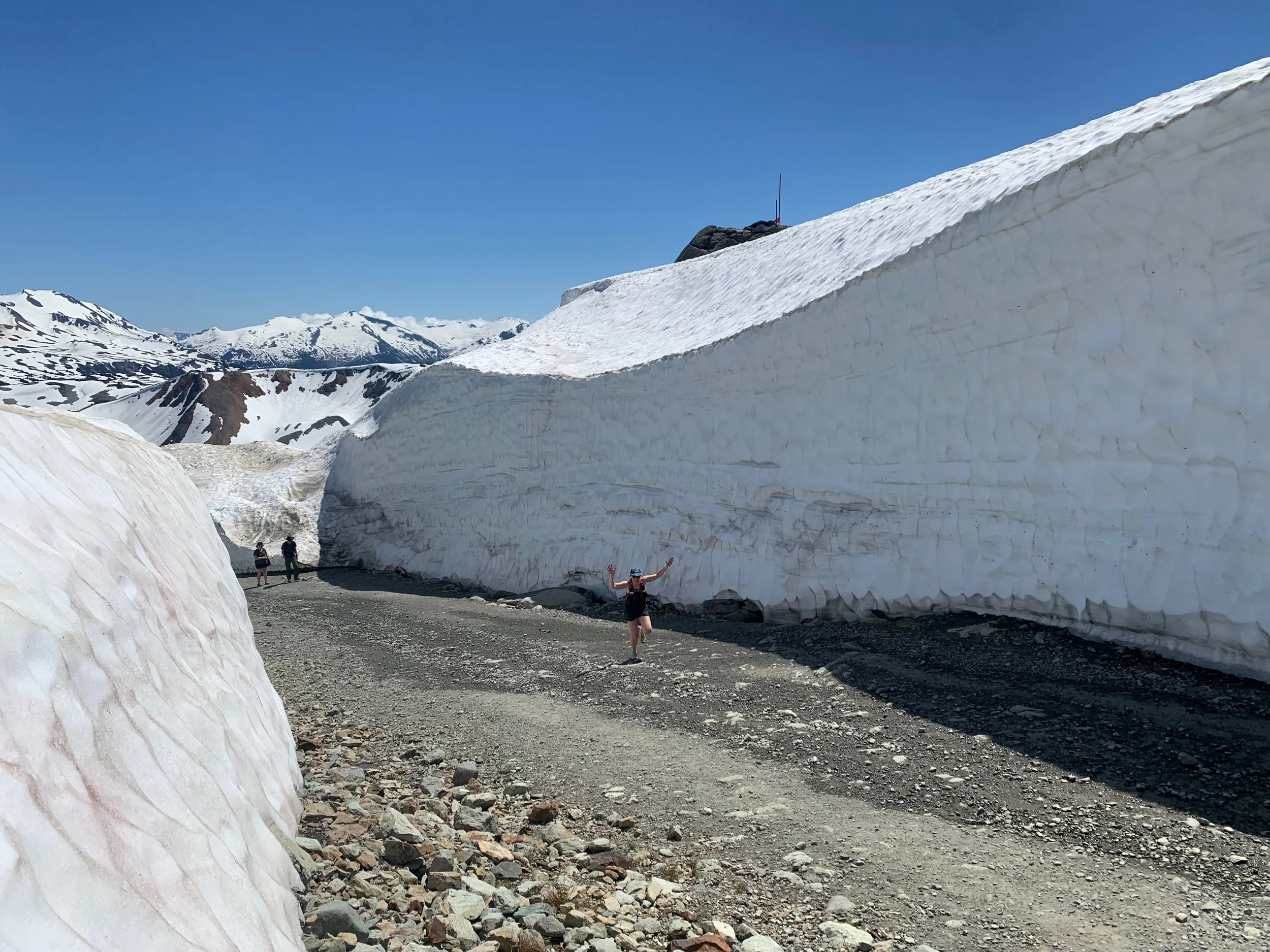
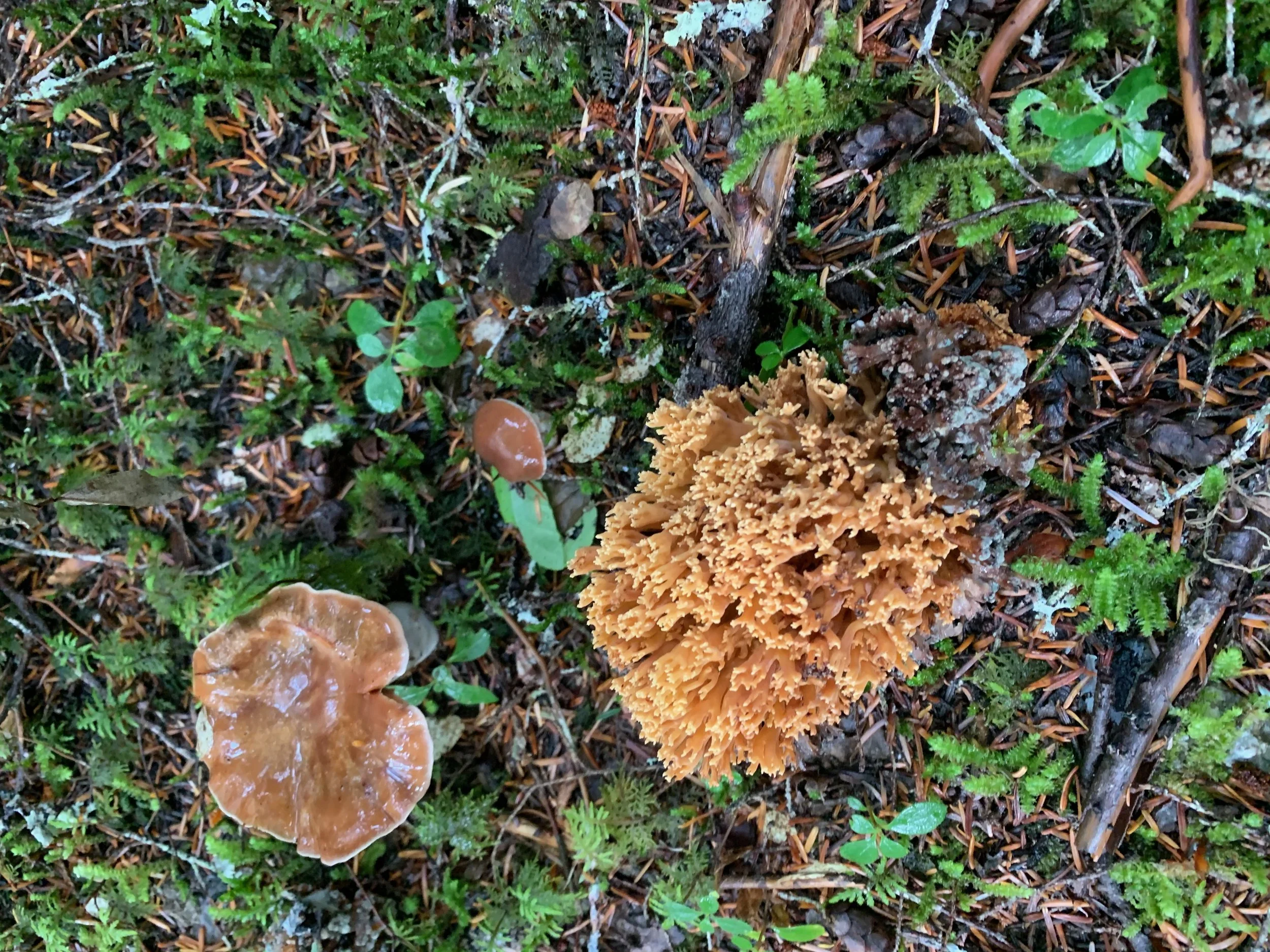
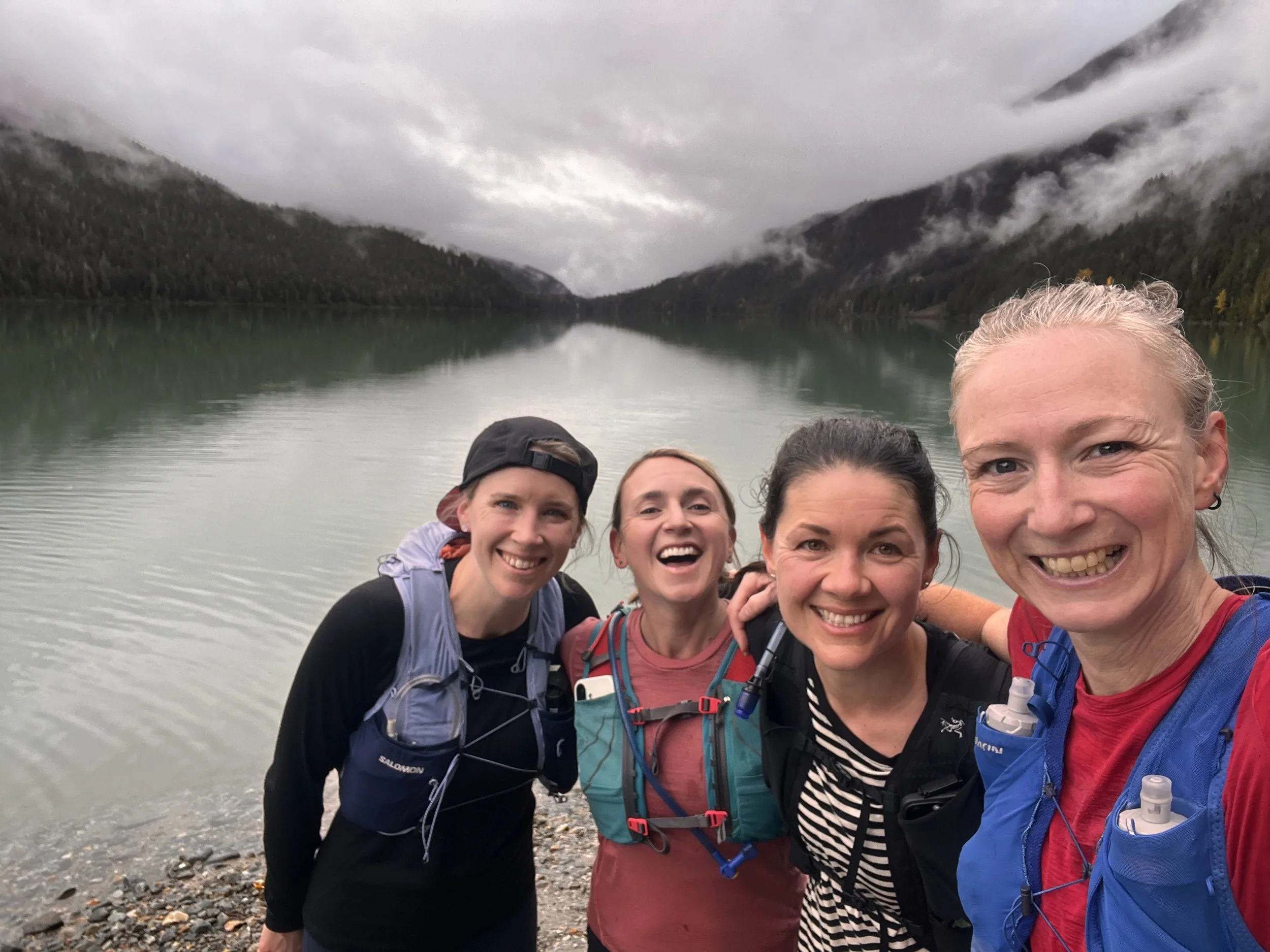

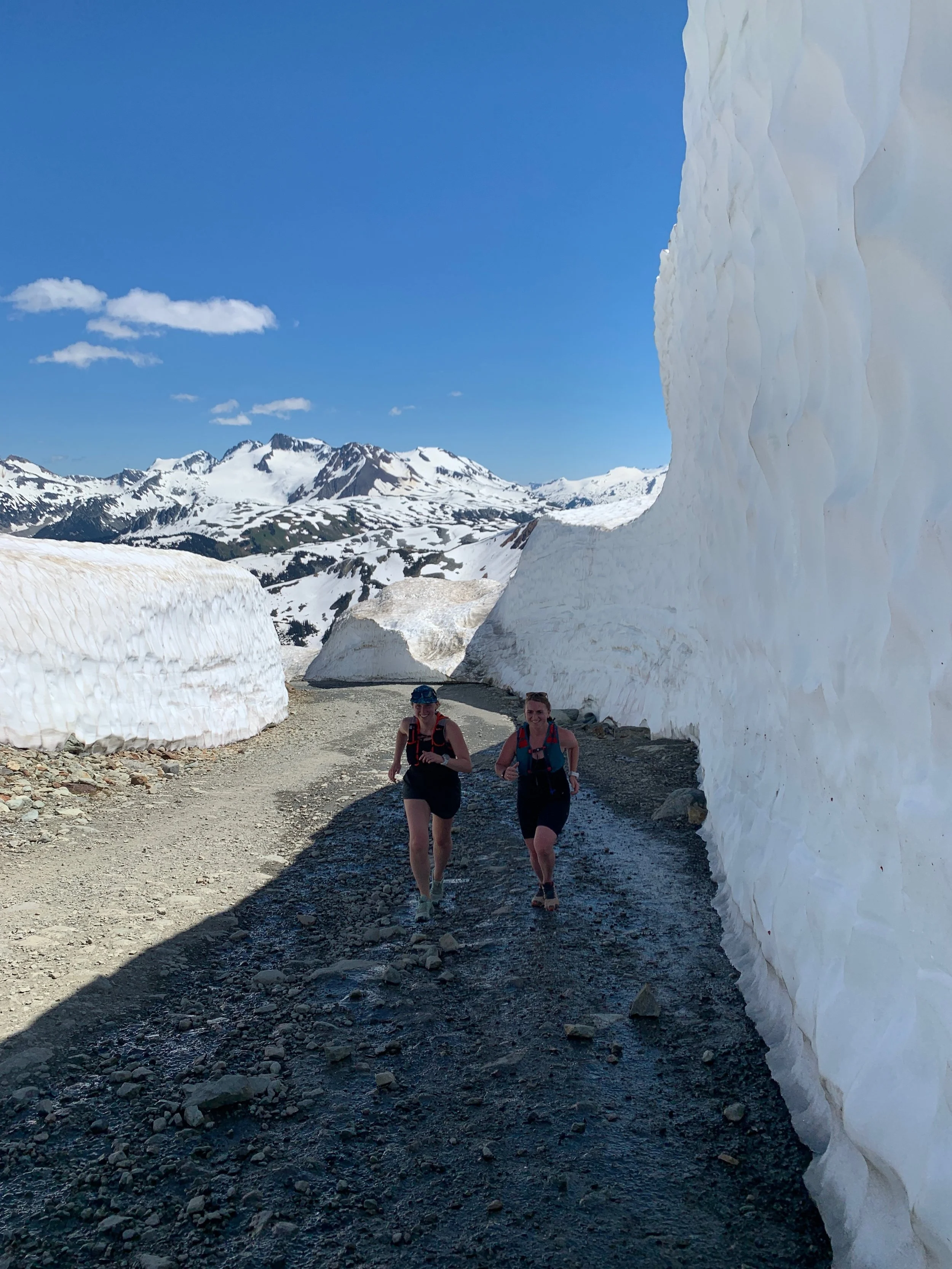
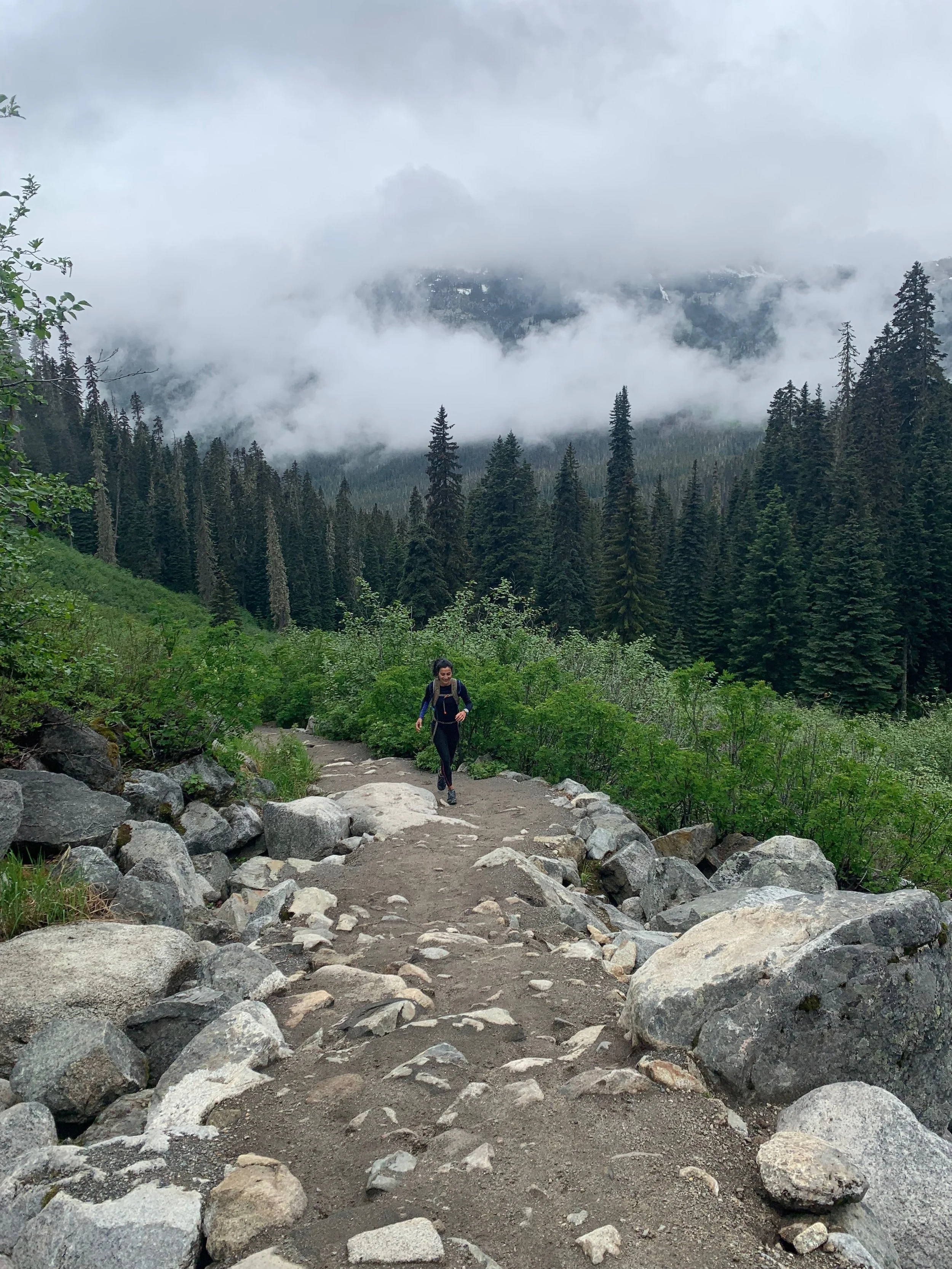
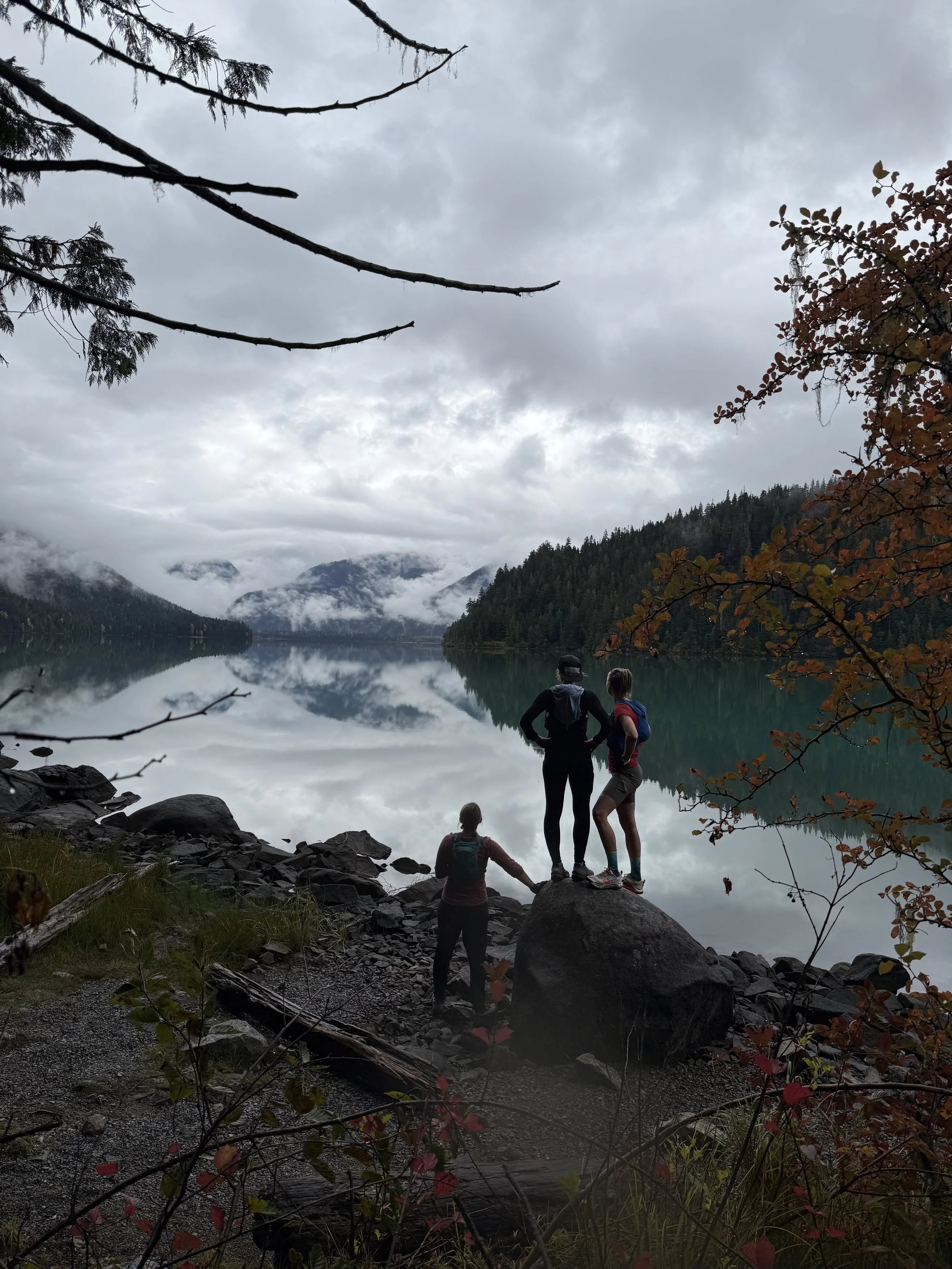
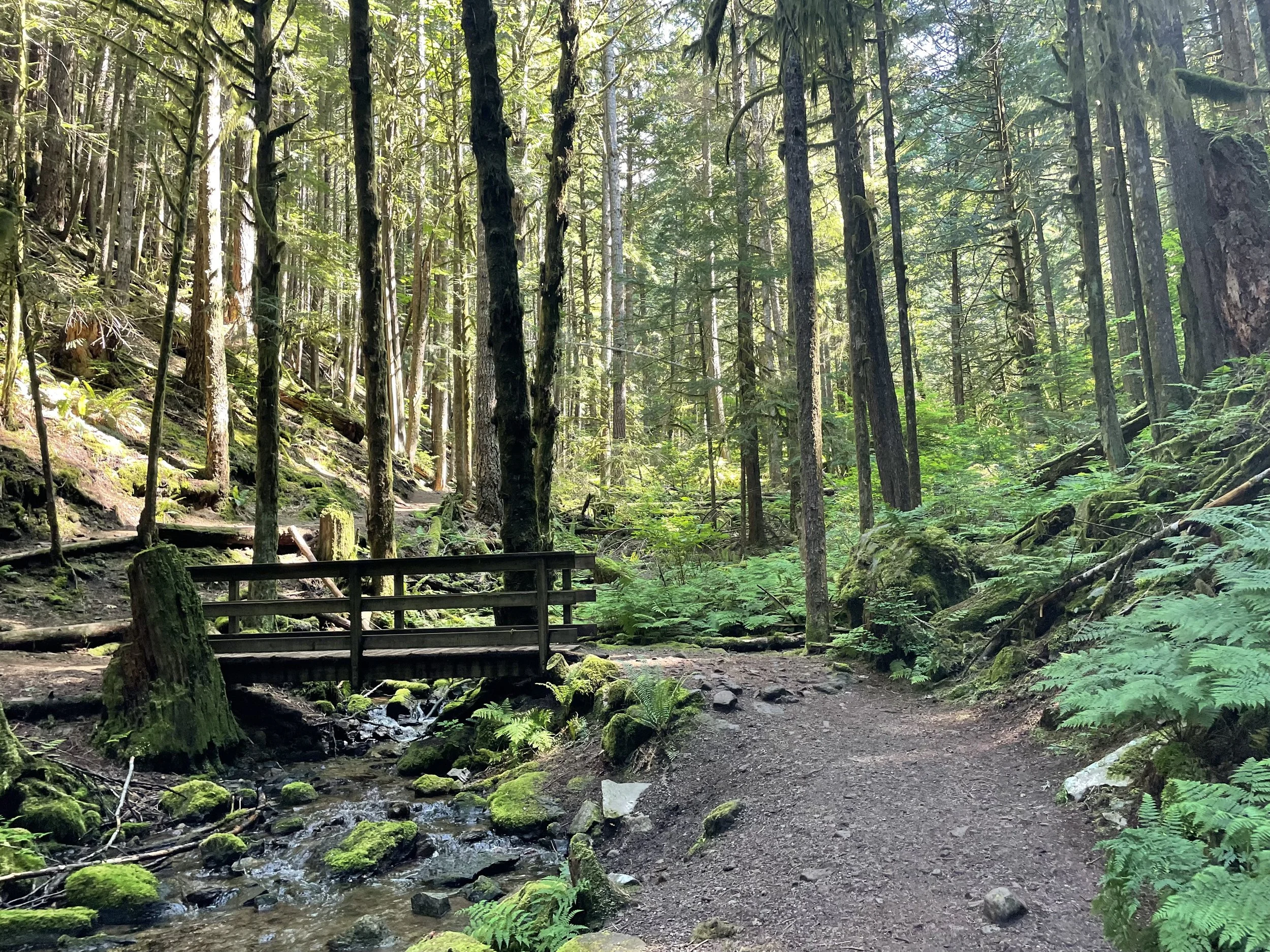
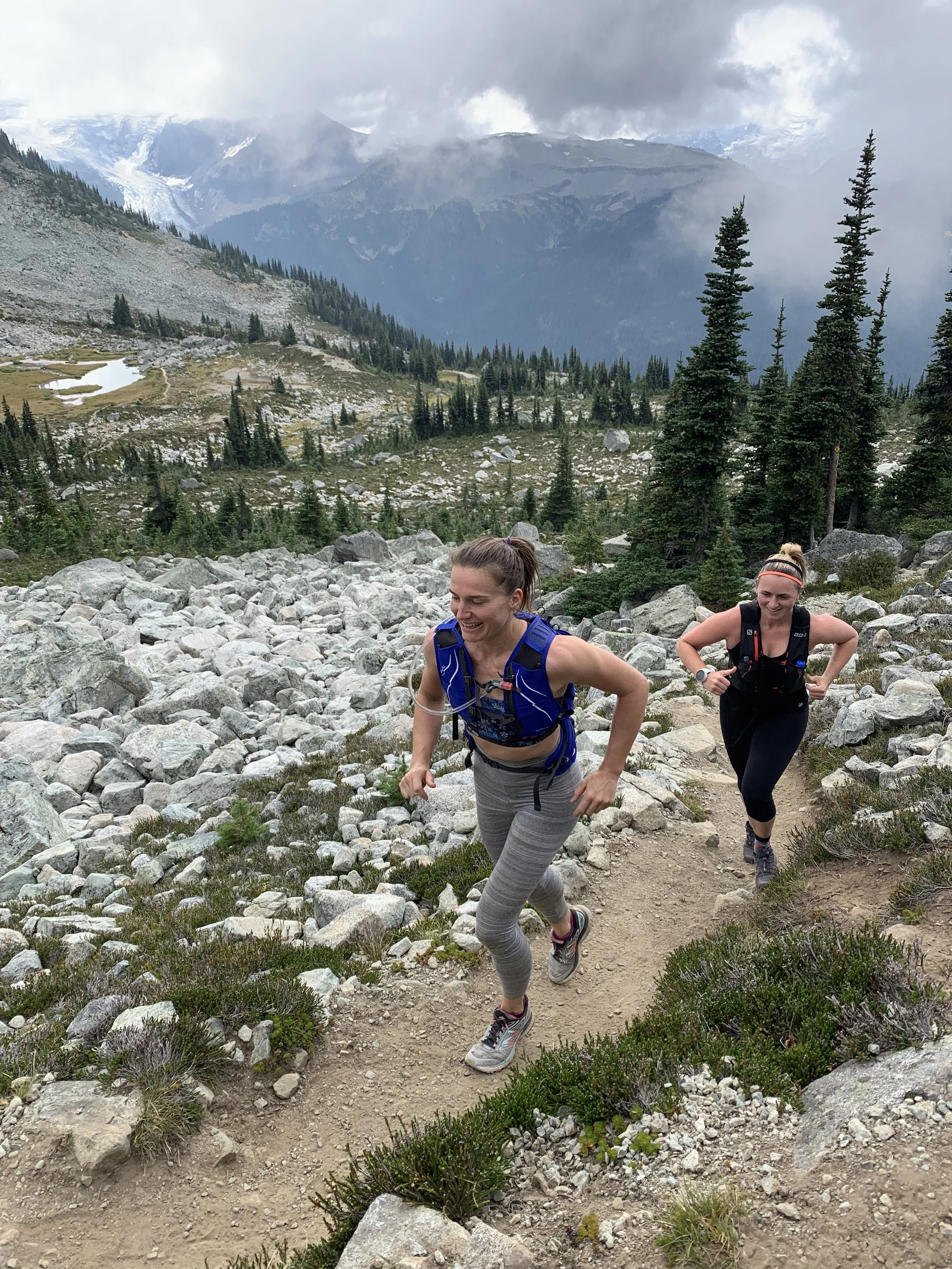
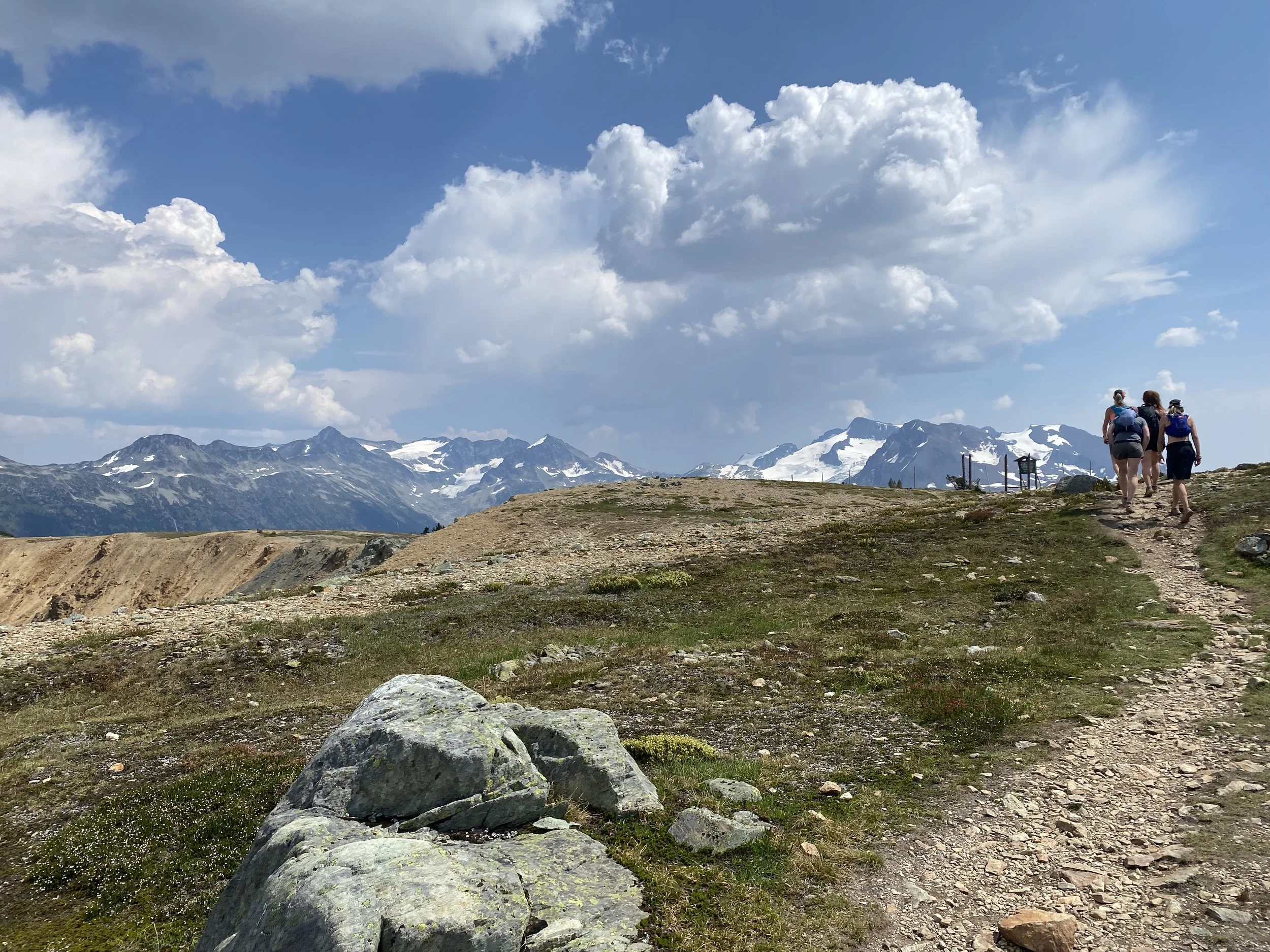
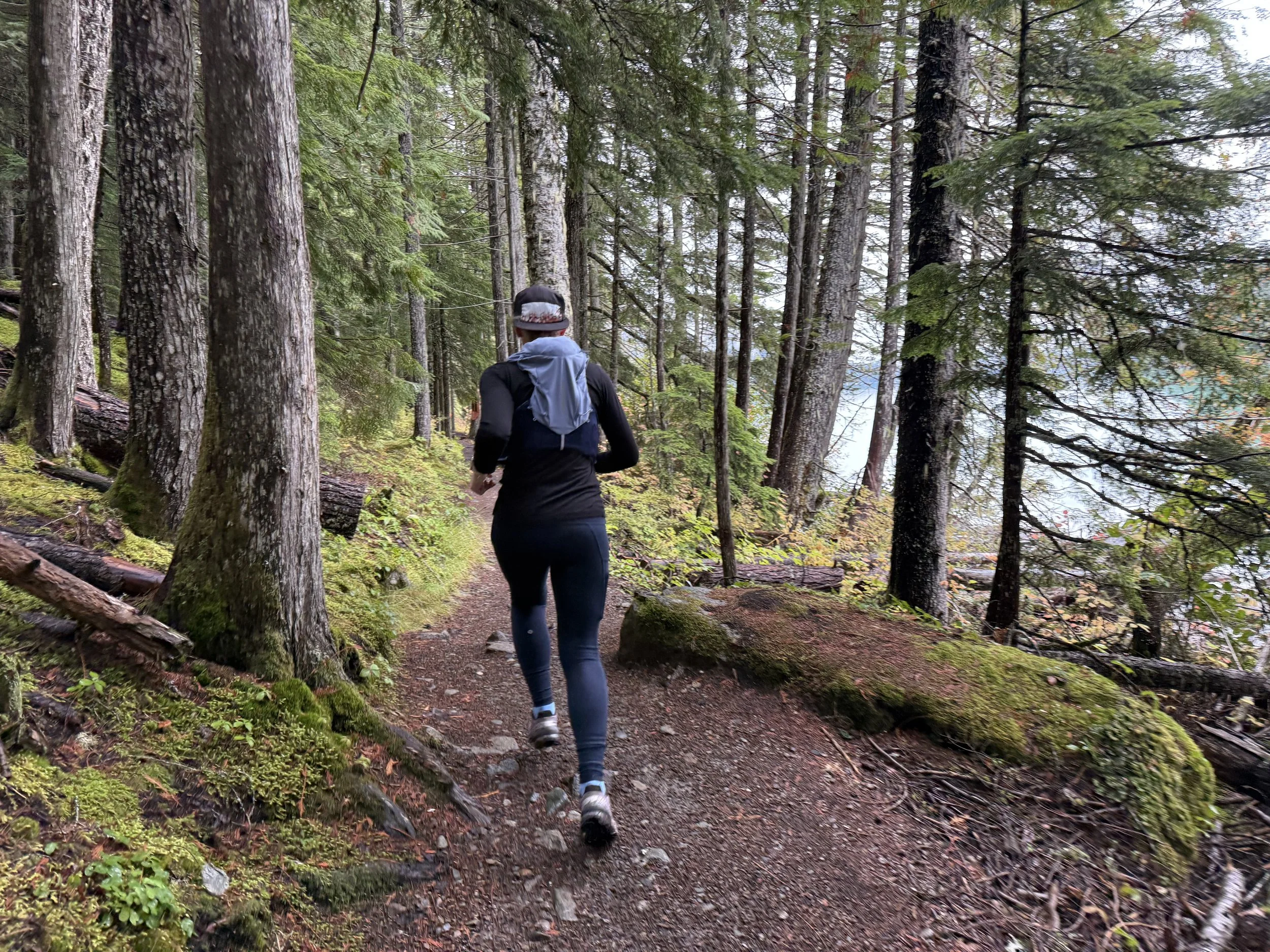

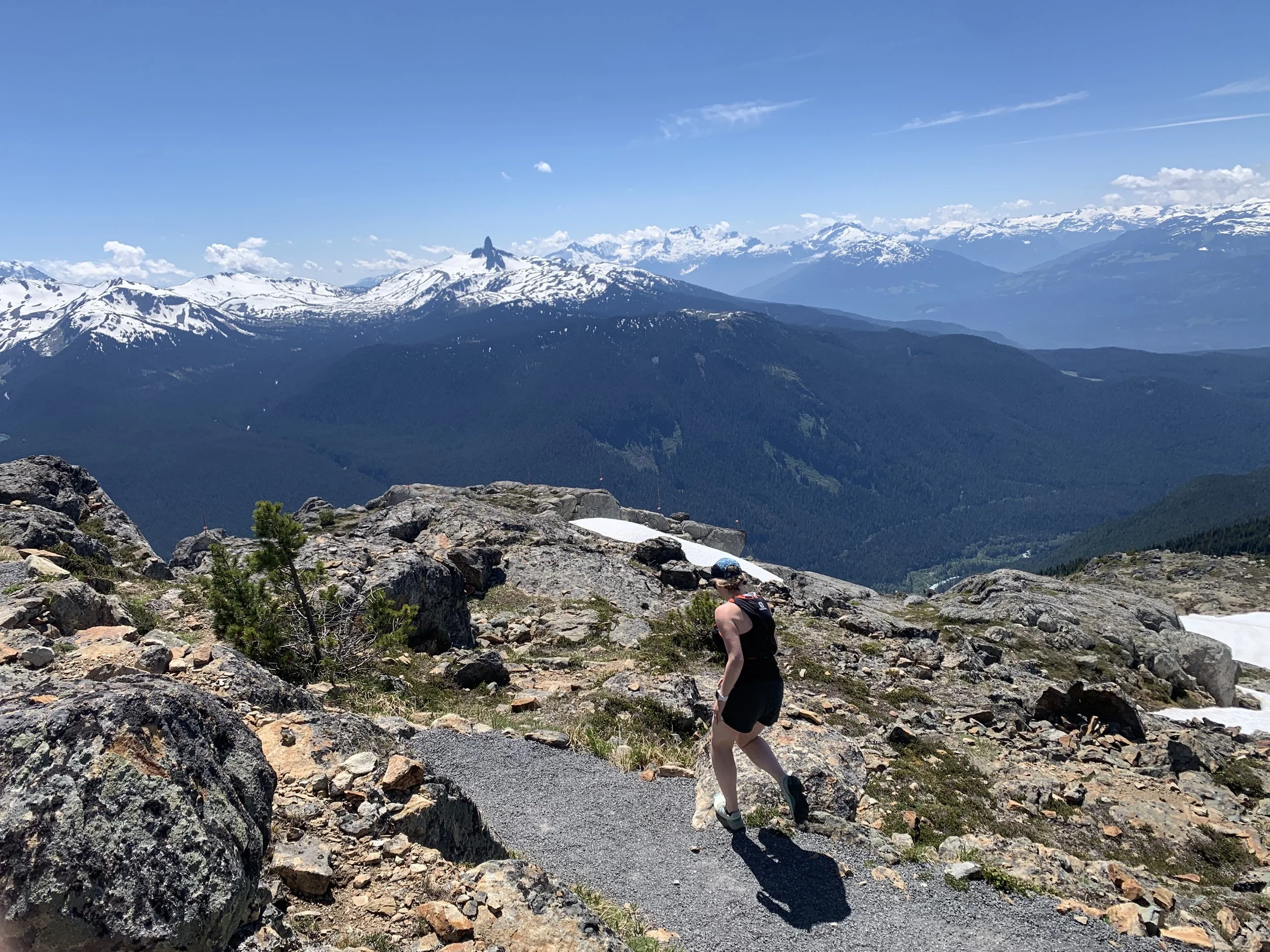
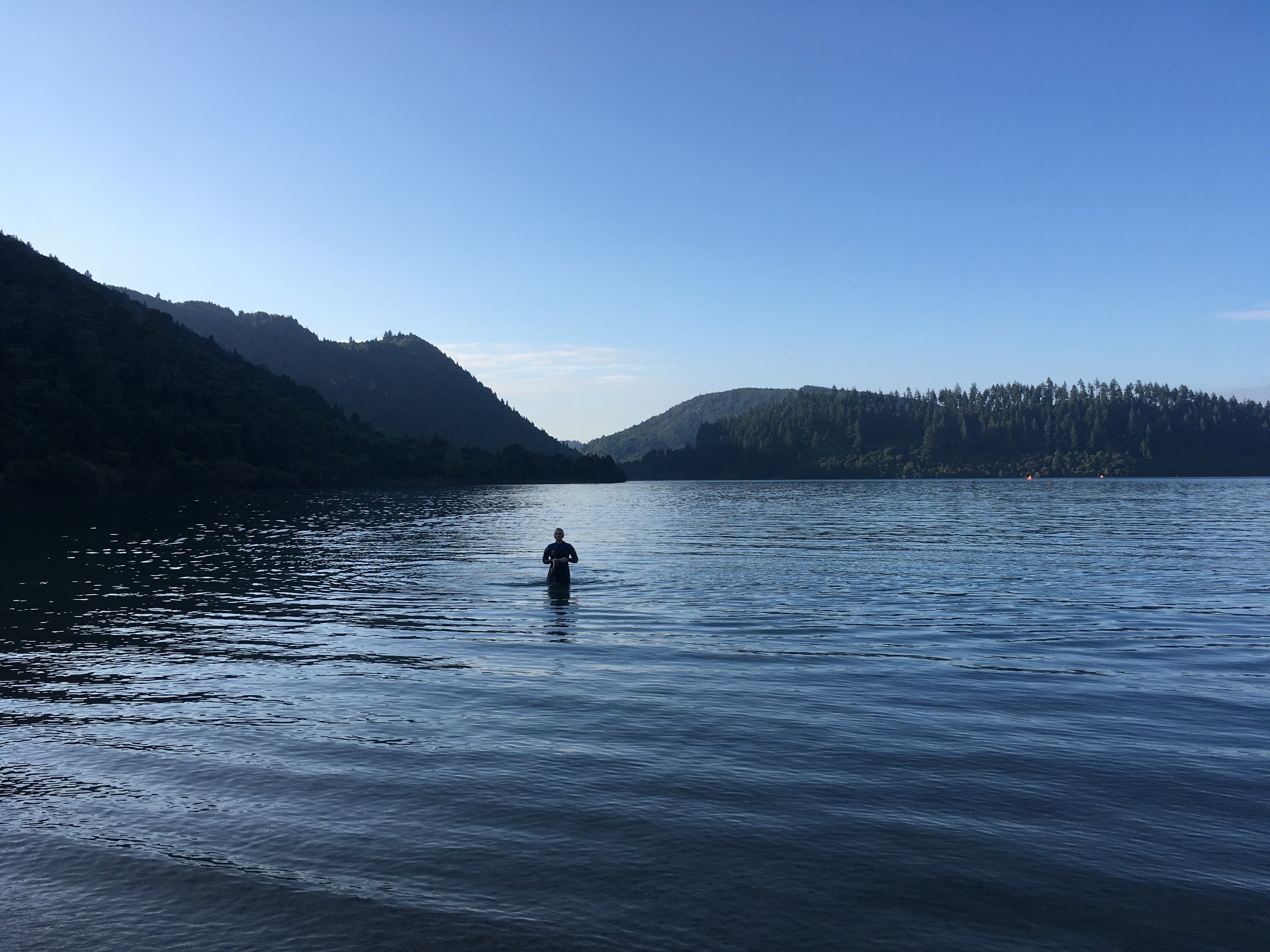


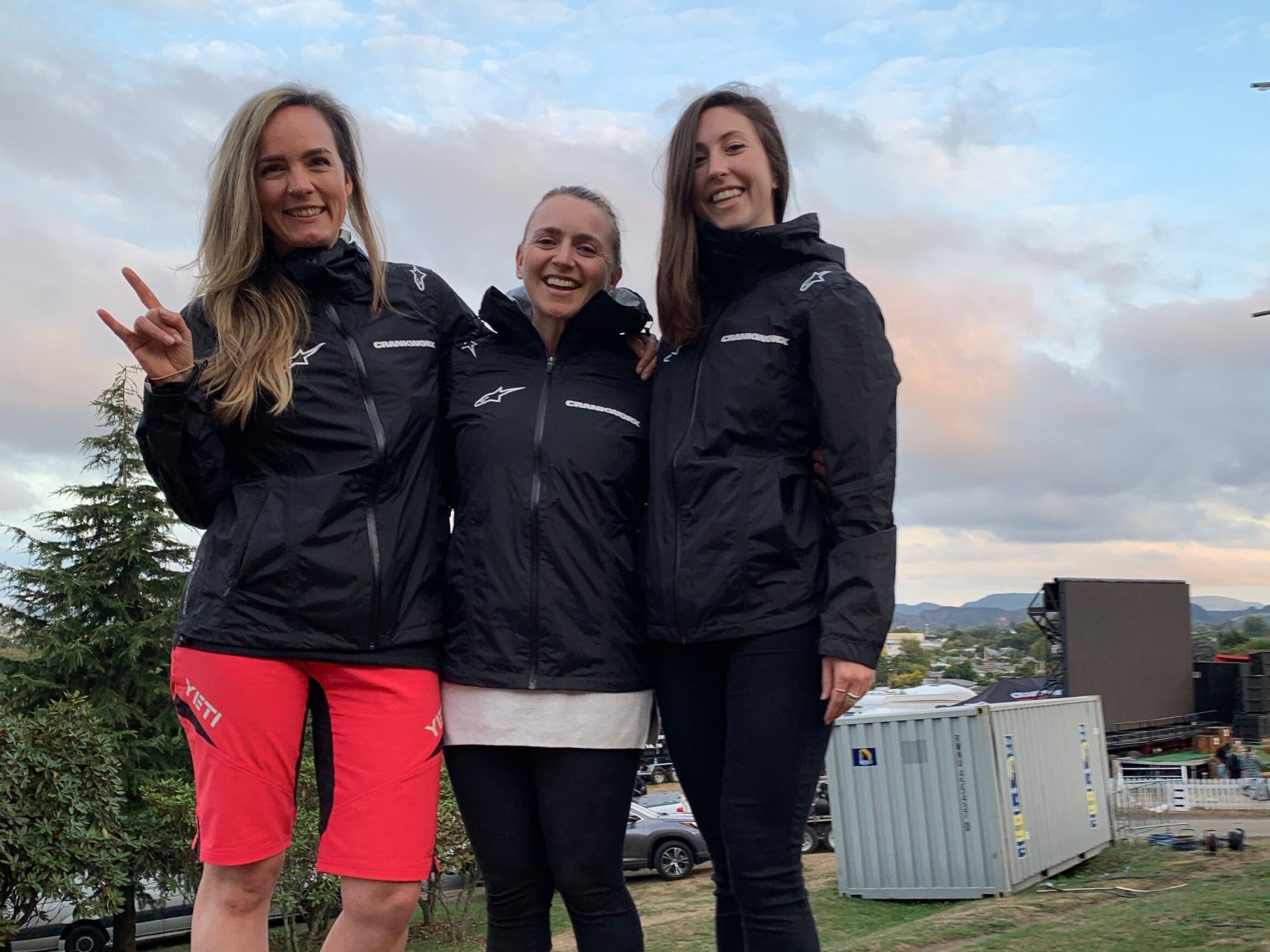
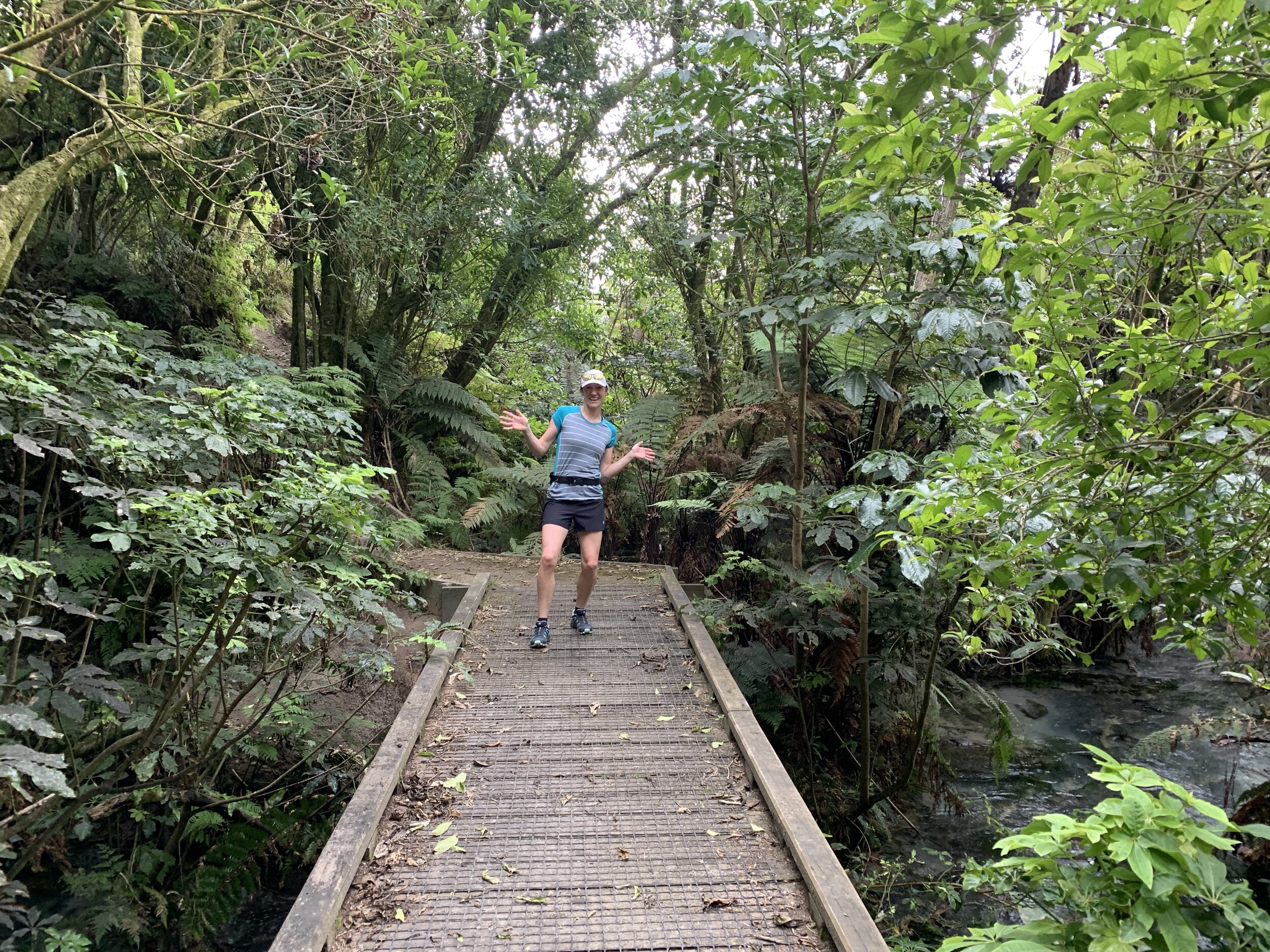

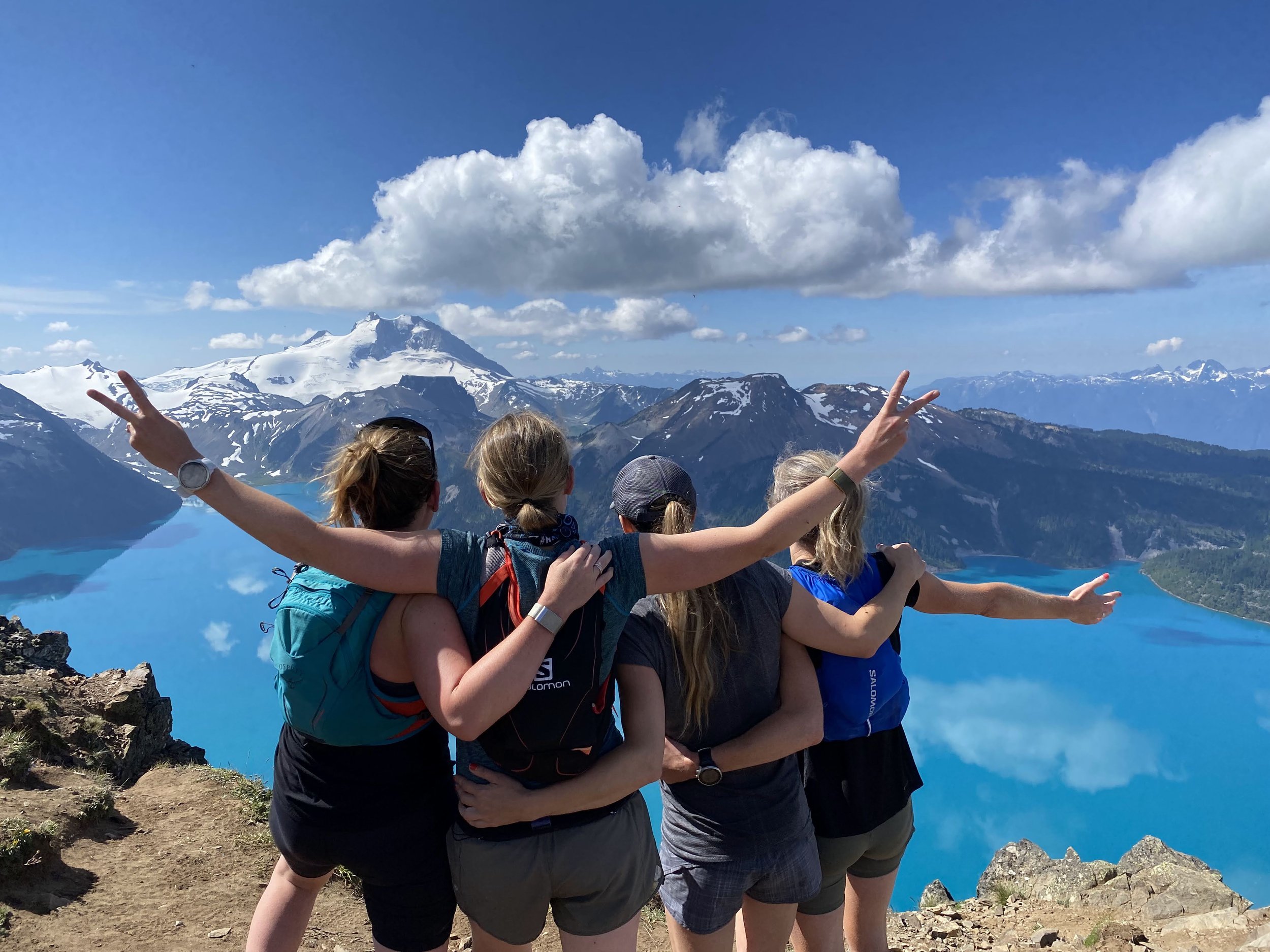


















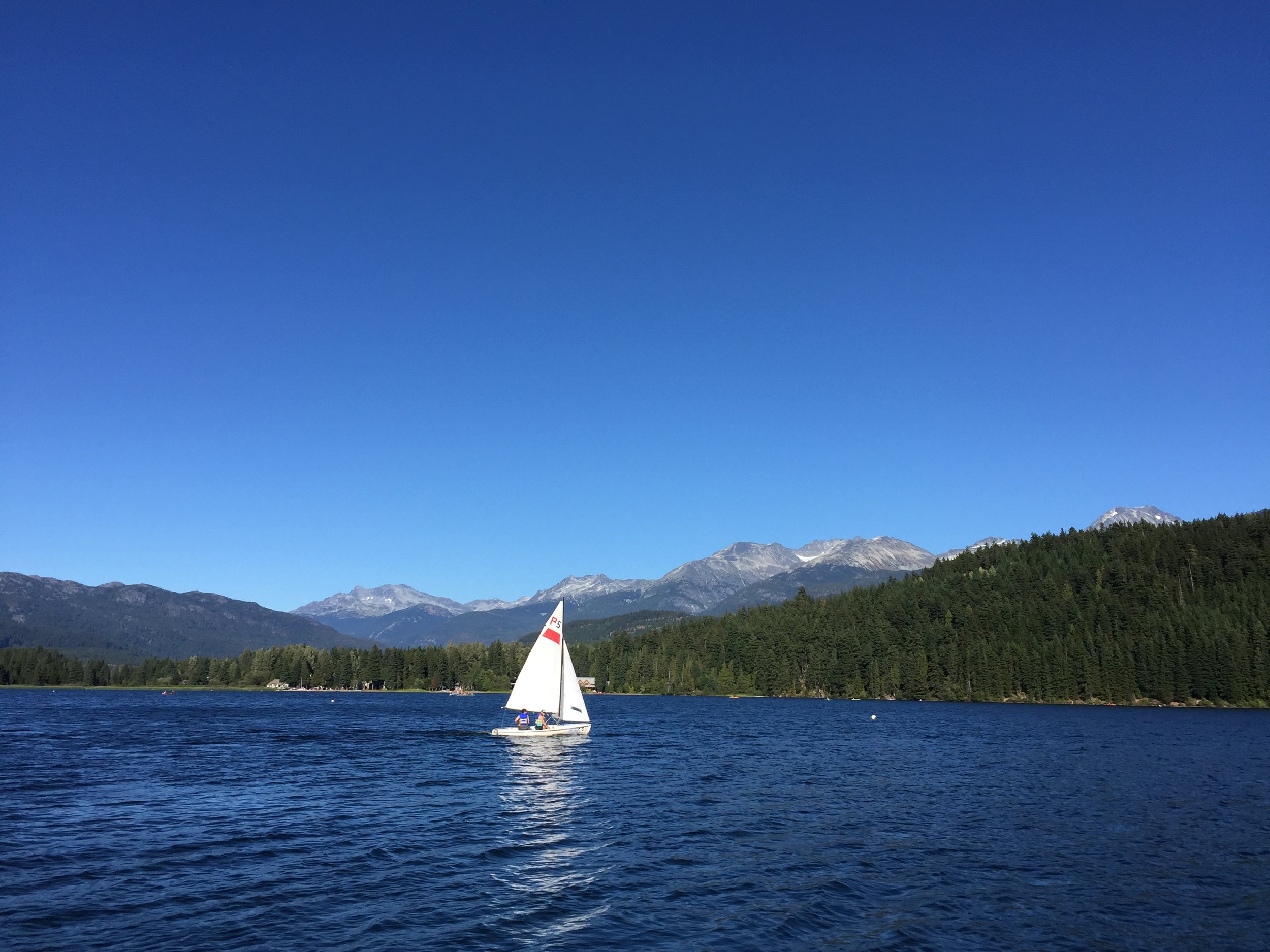


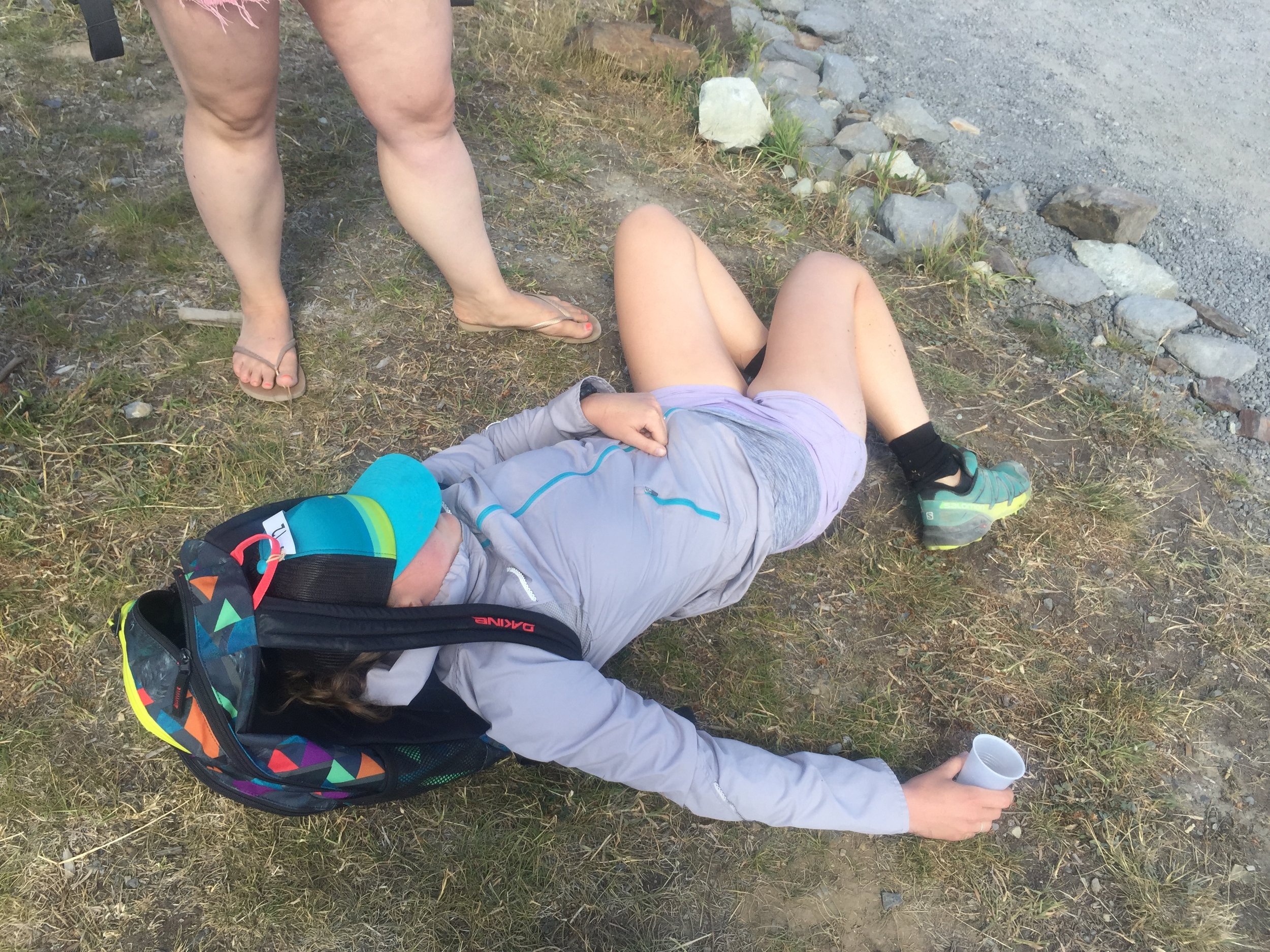


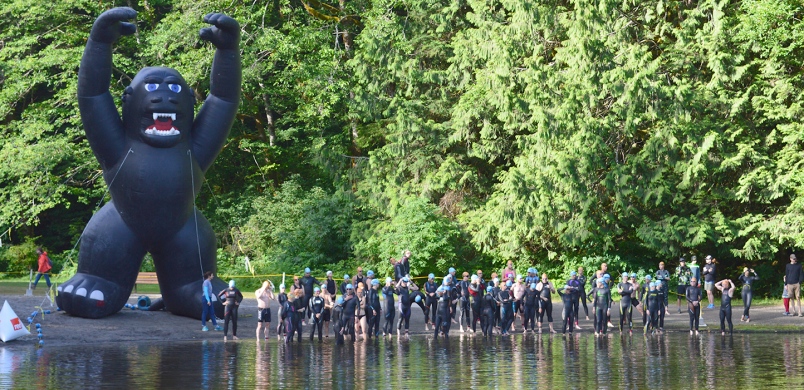
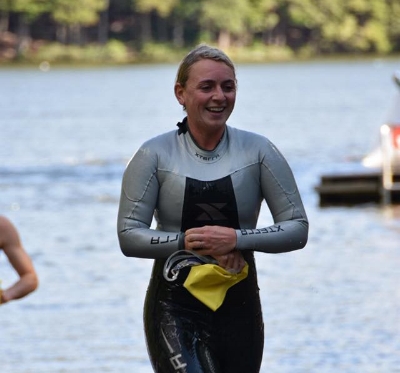
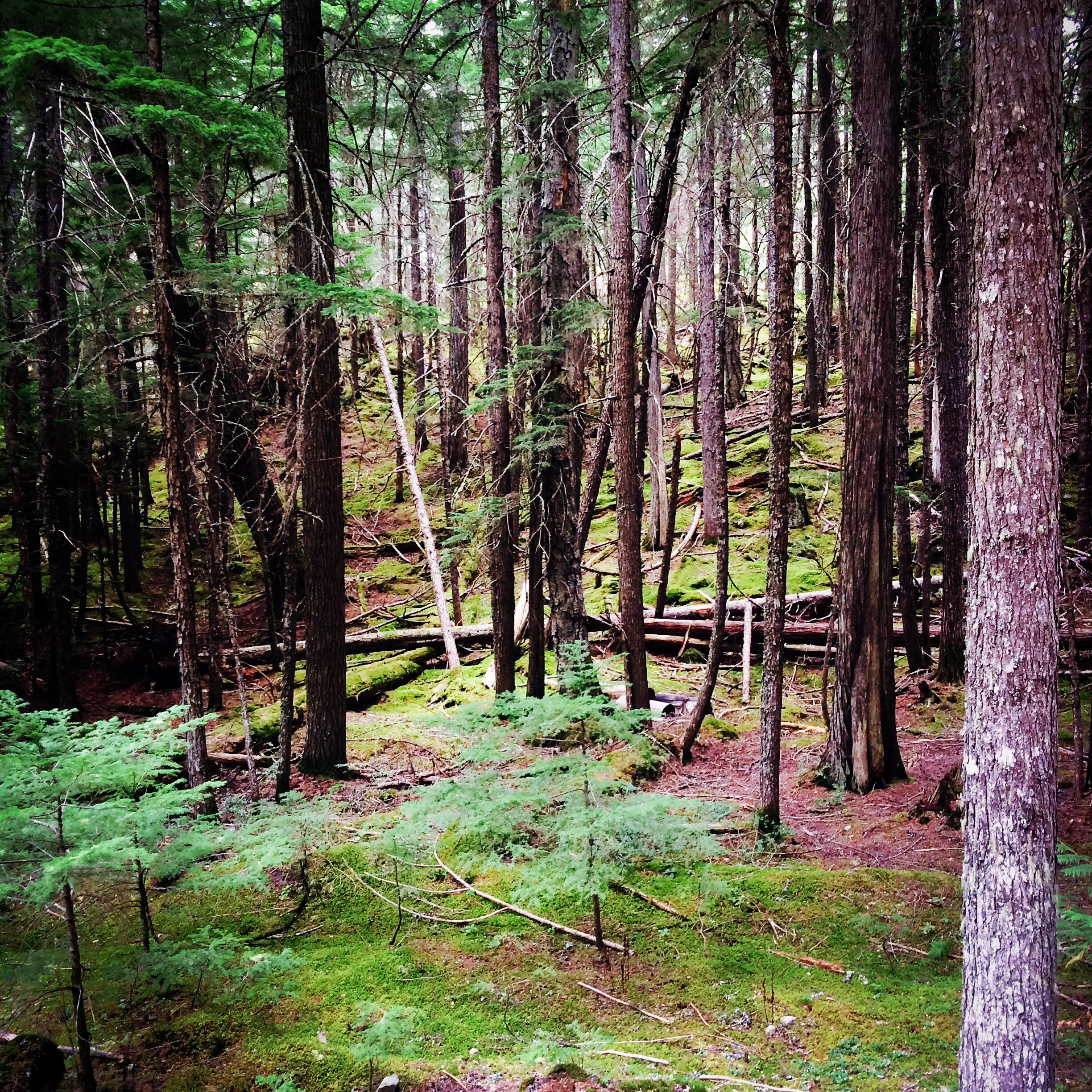


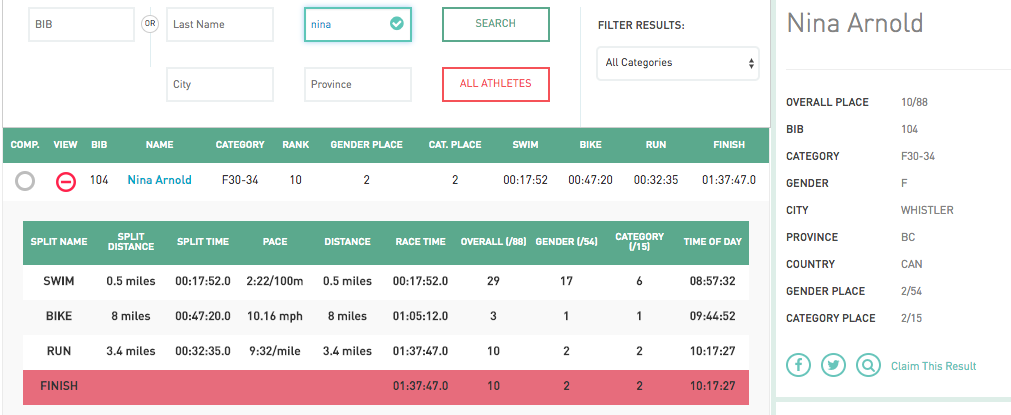


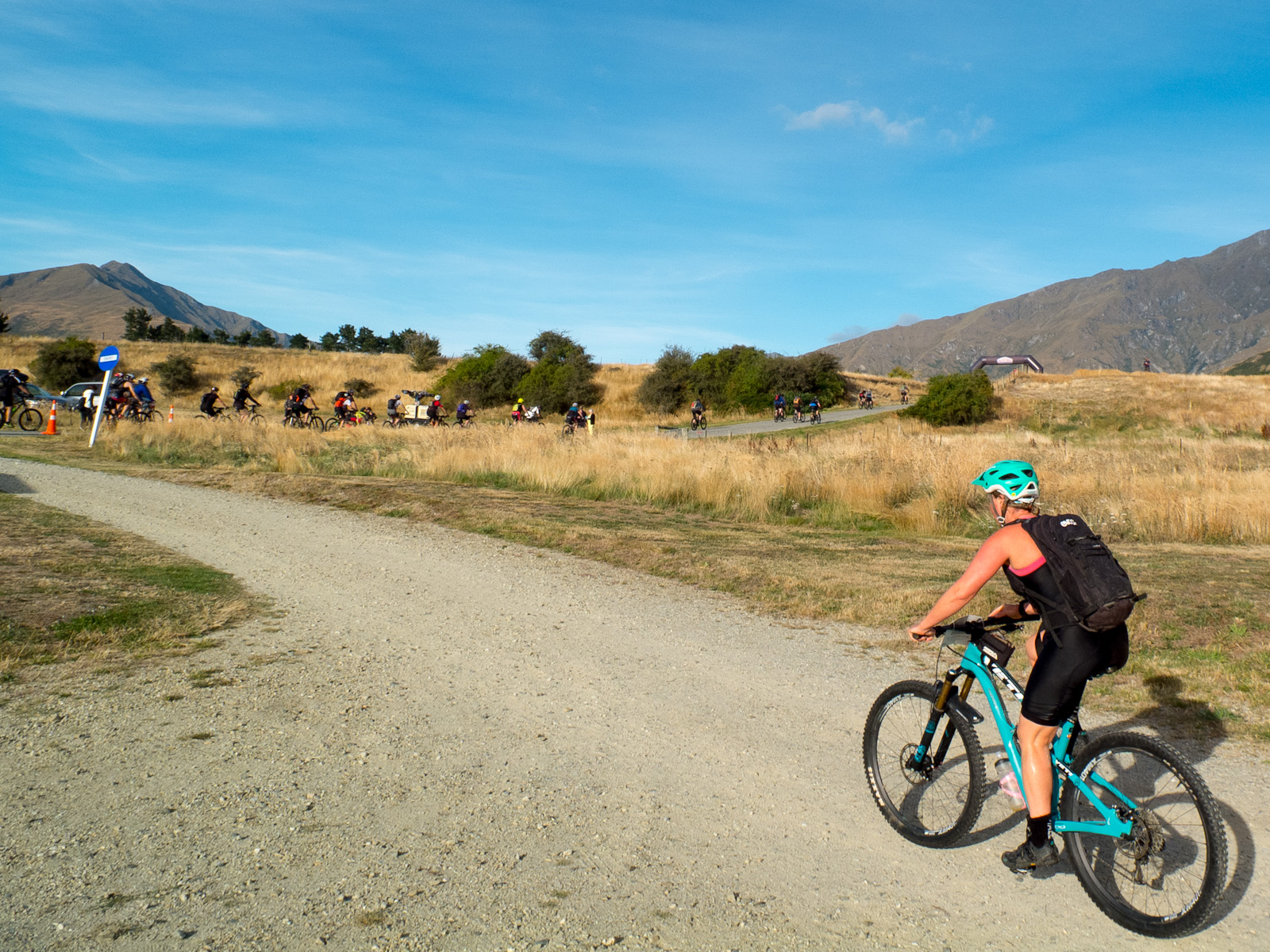





























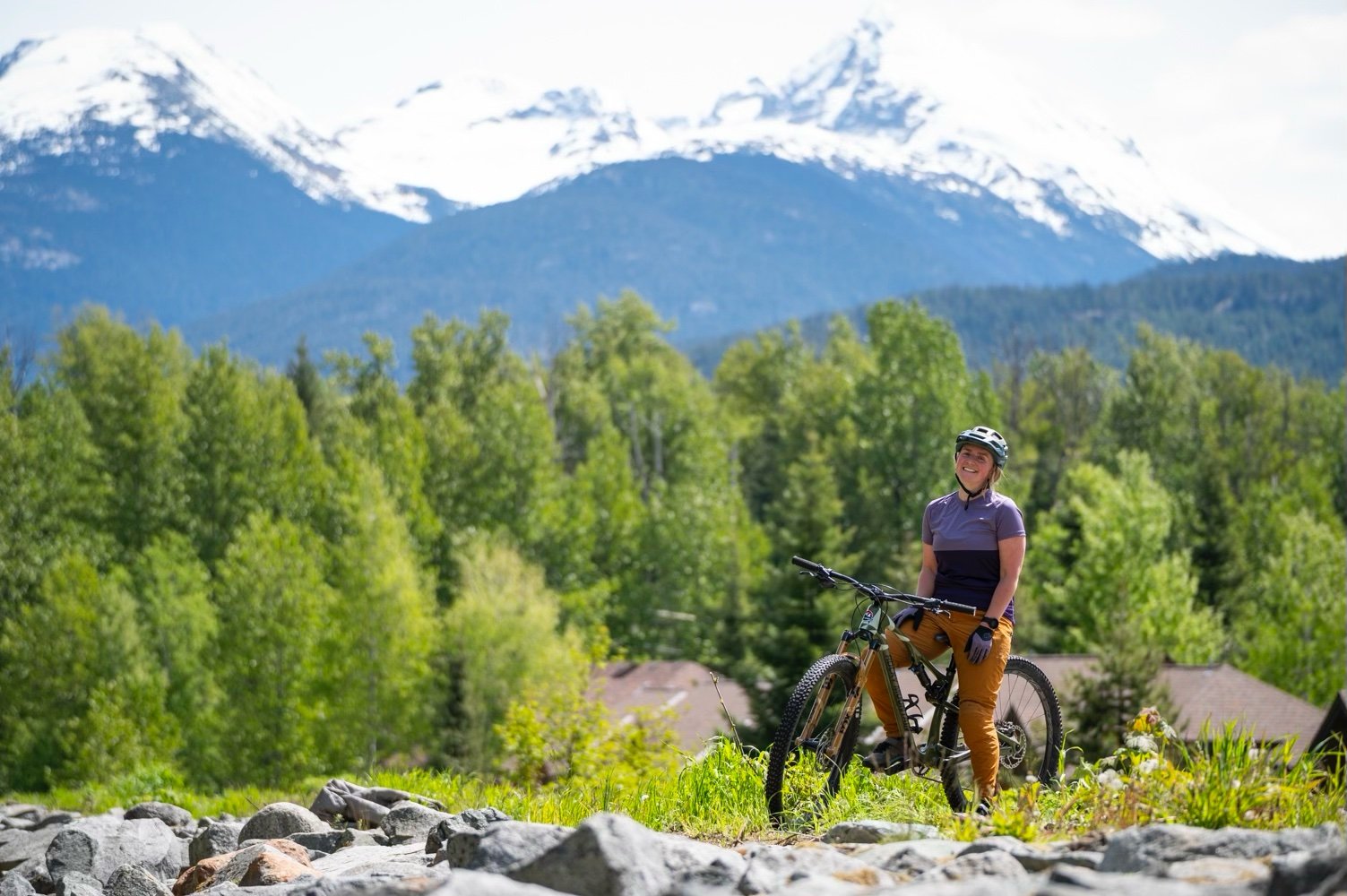
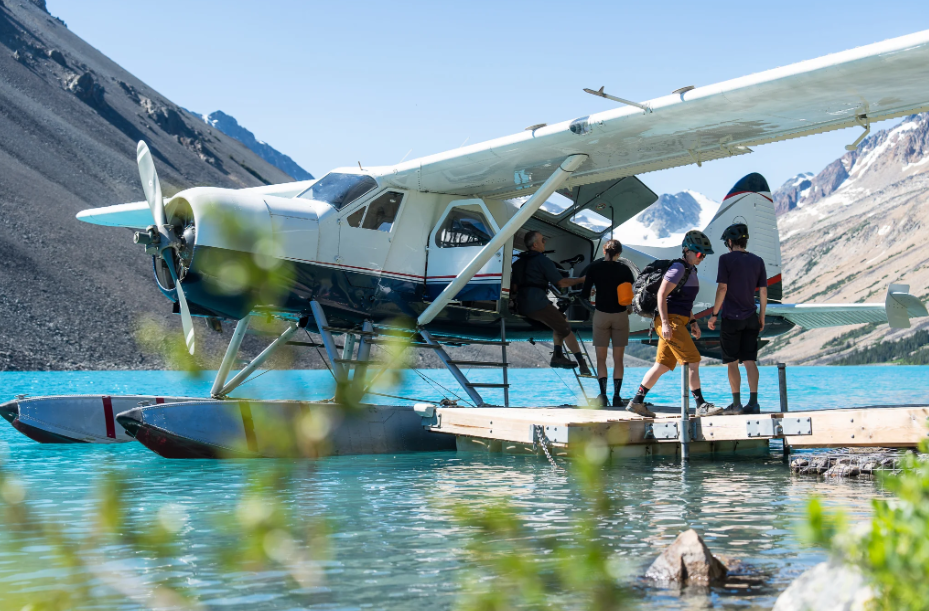






















Looking for quick, scenic trail runs in the Sea to Sky? Explore five favourites near Whistler, Squamish and Pemberton featuring glacier lakes, alpine vistas and forest trails perfect for adventurous runners.